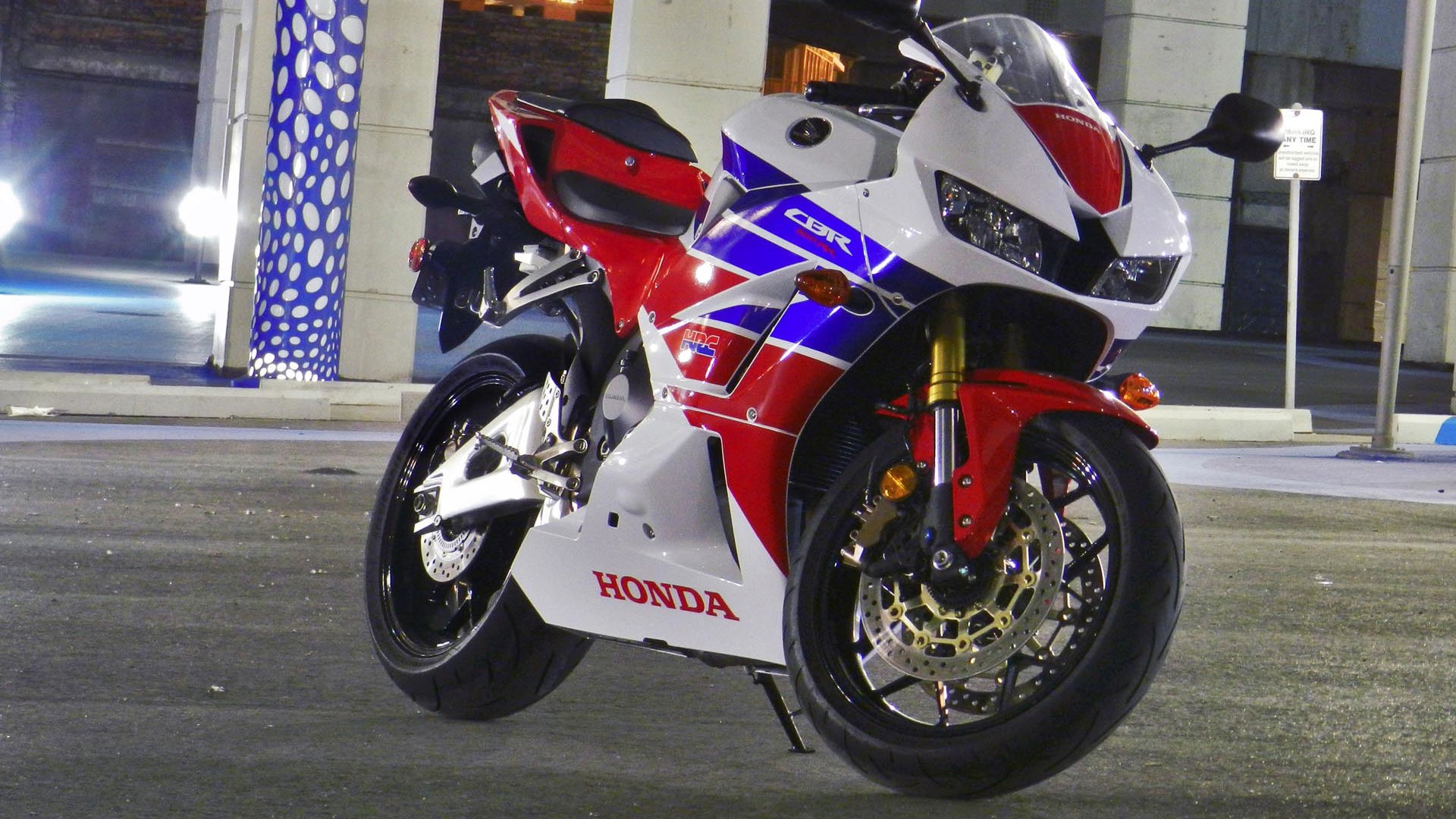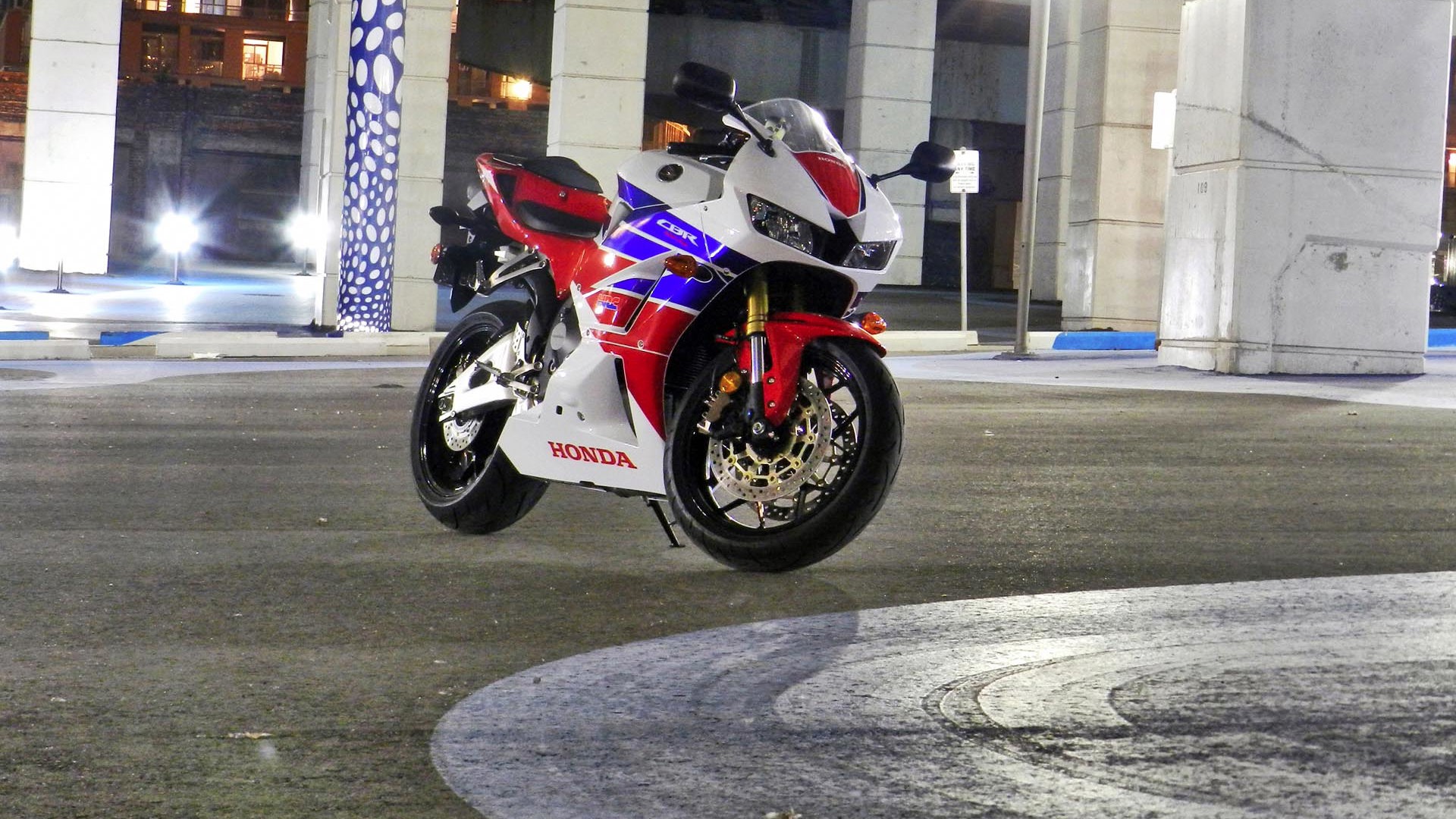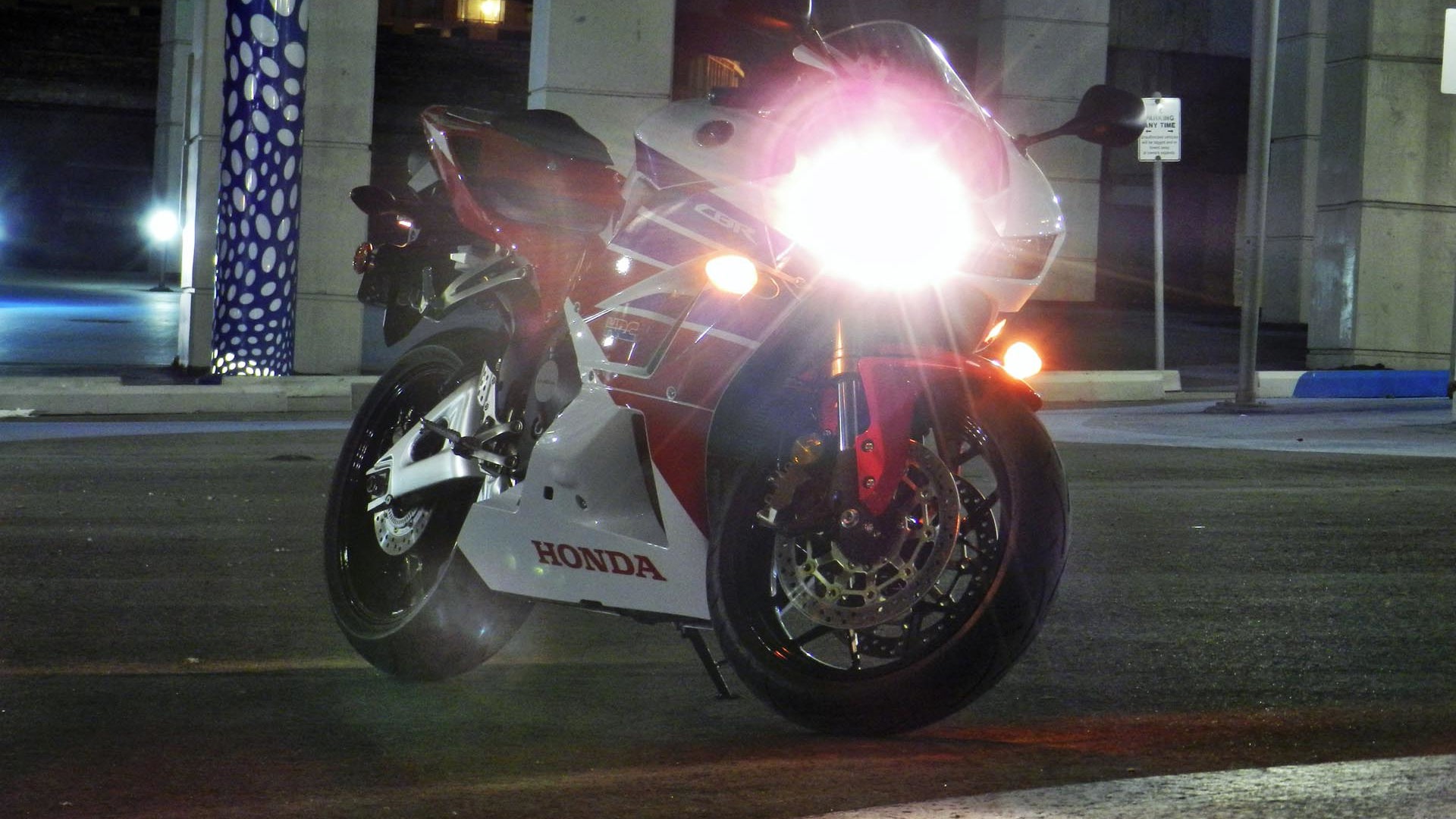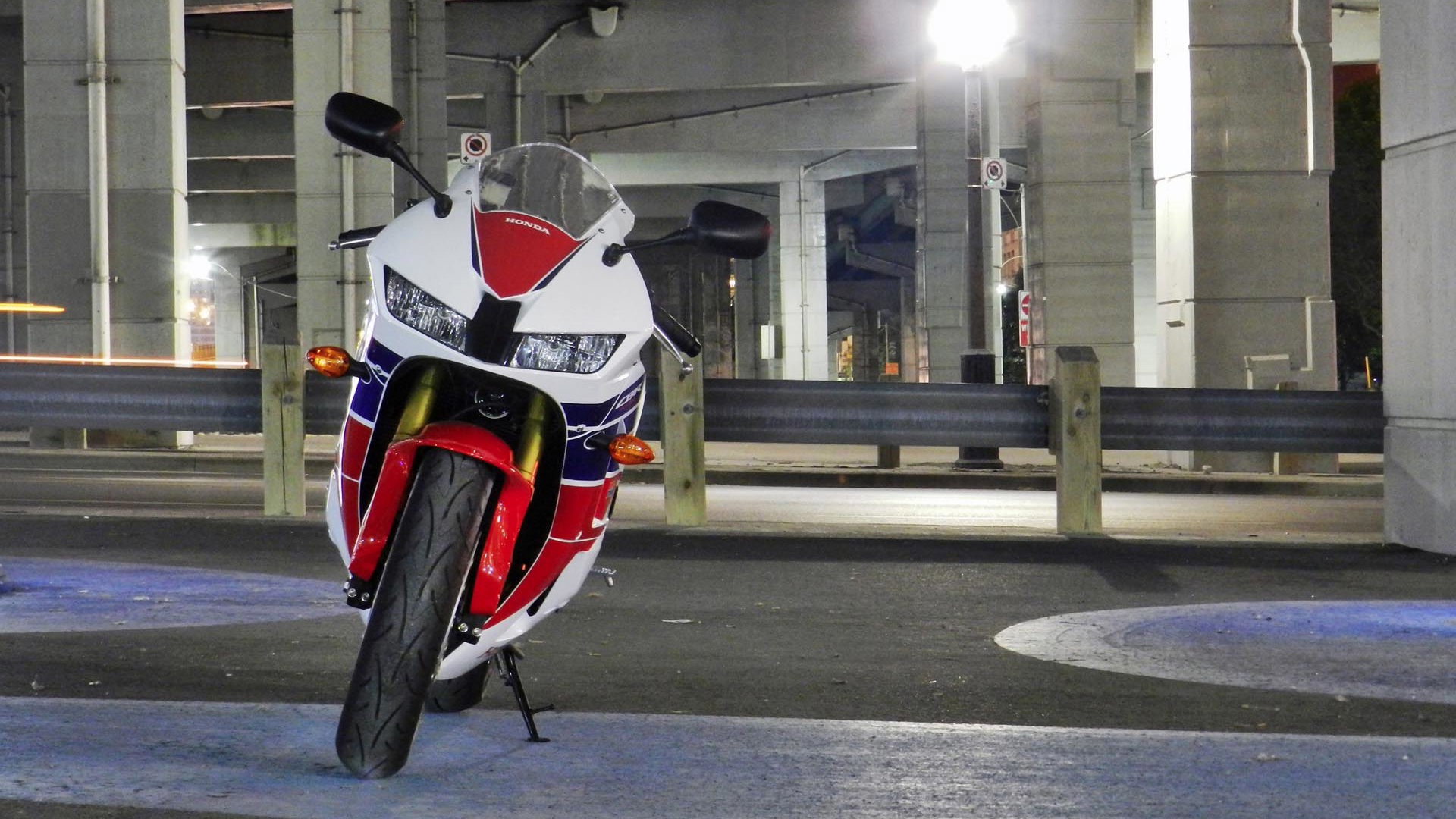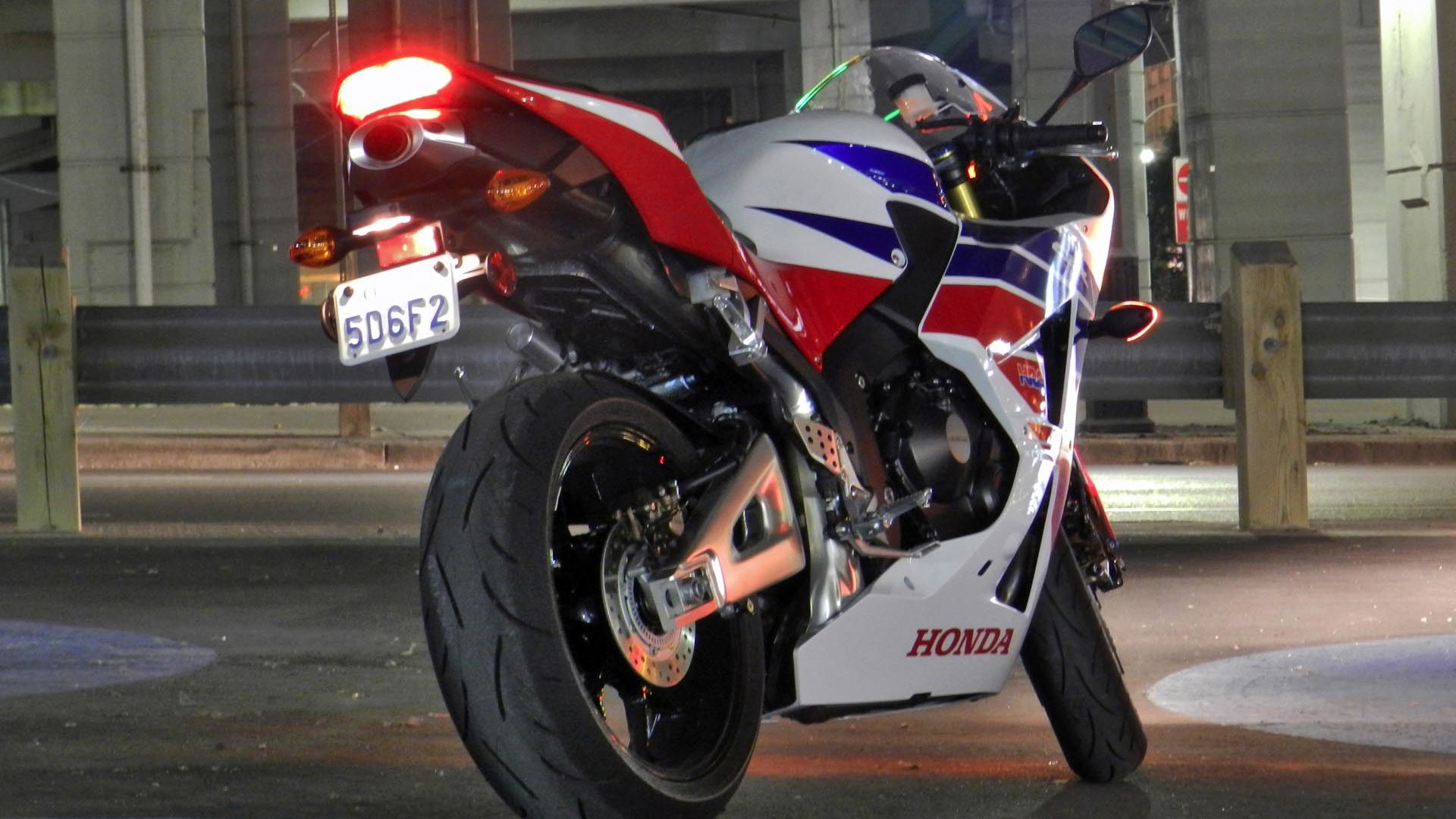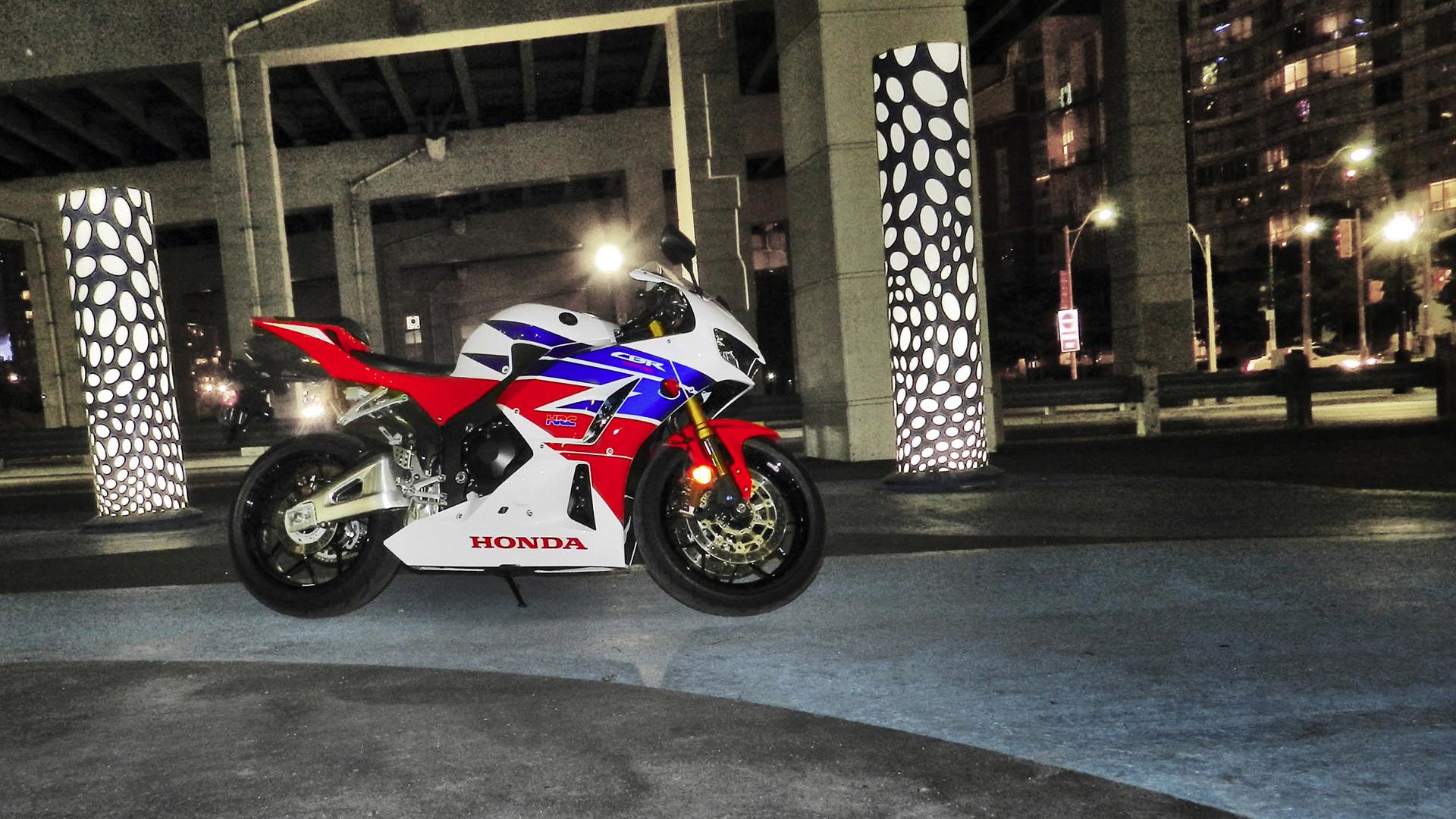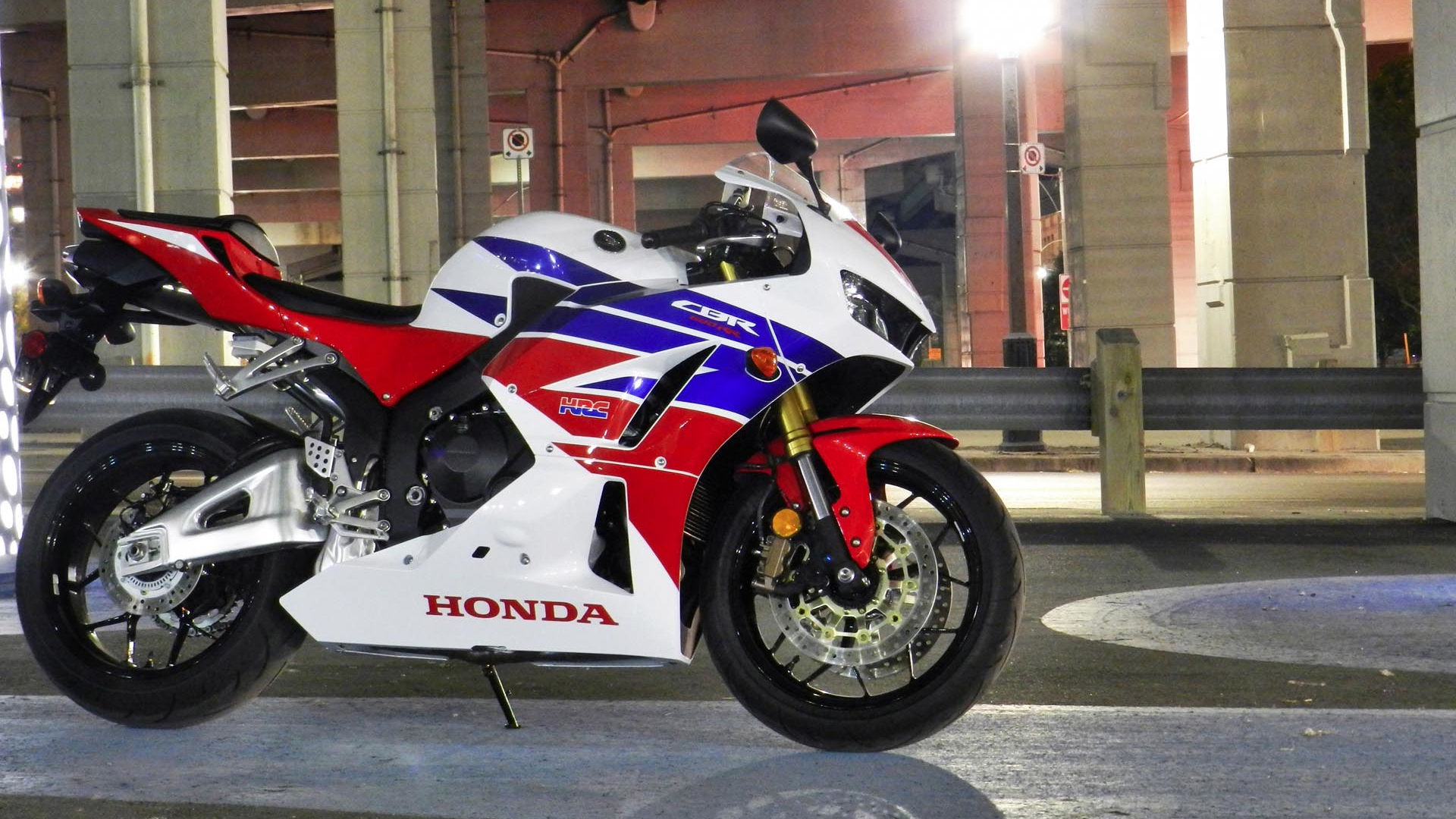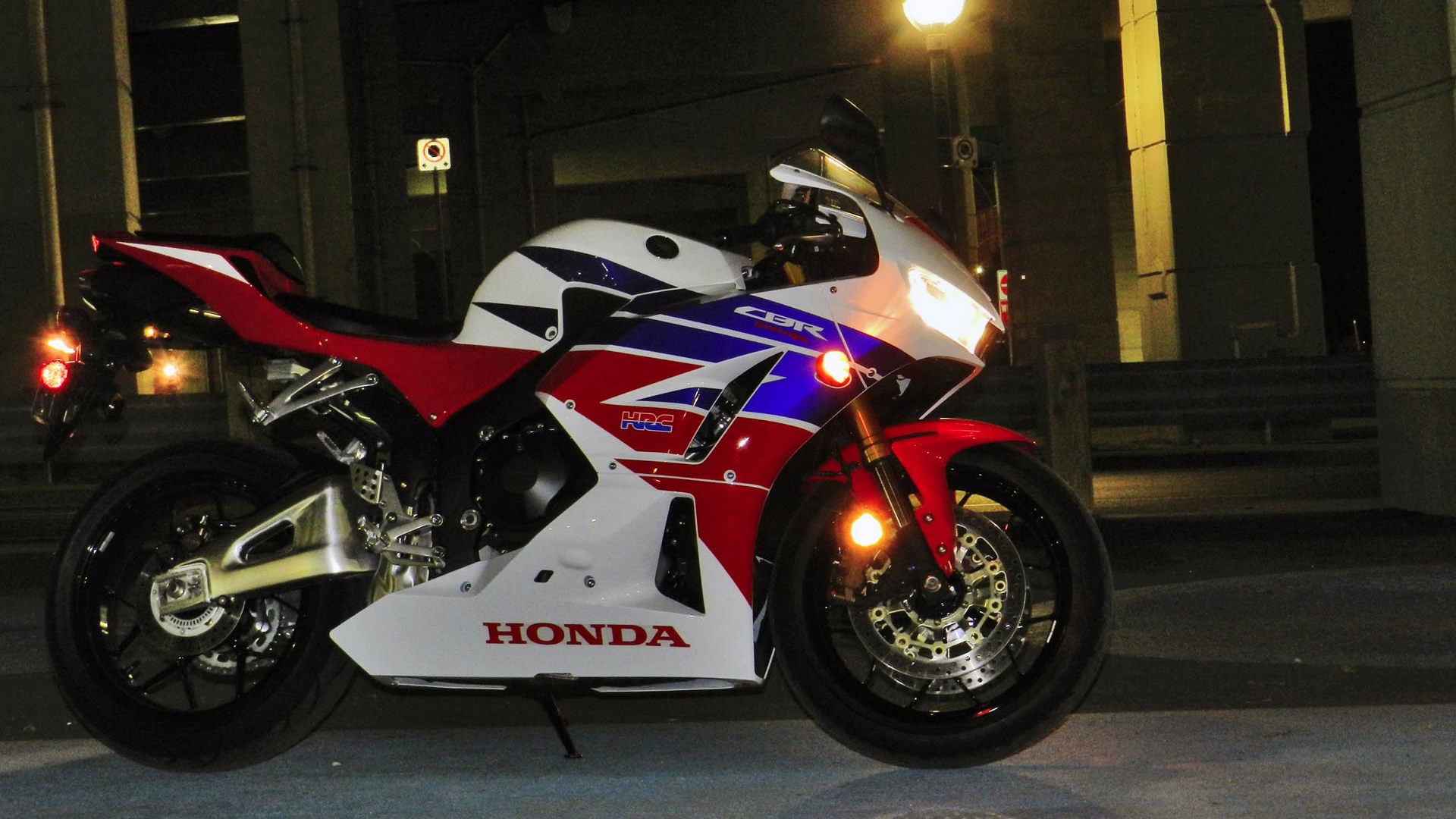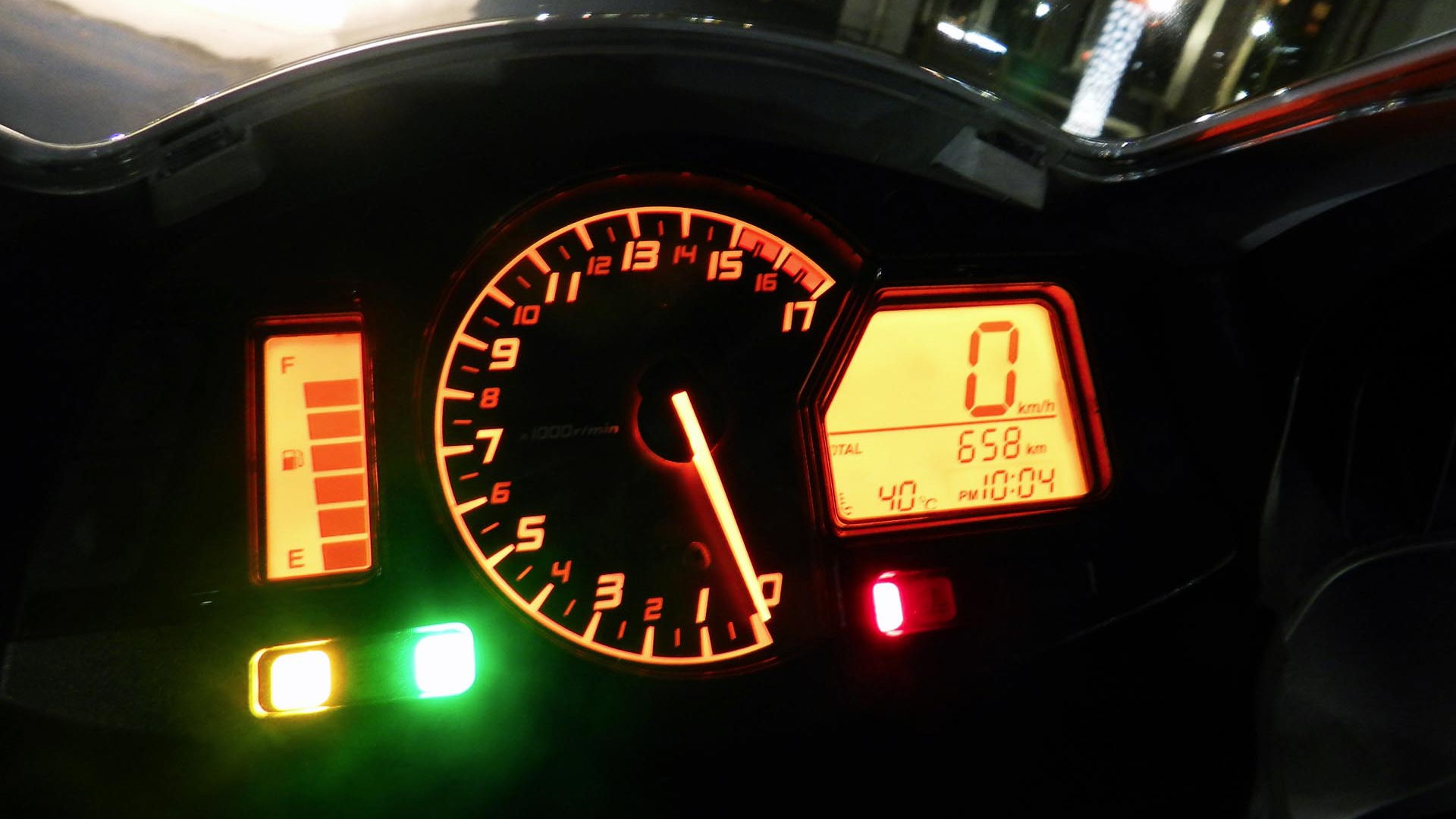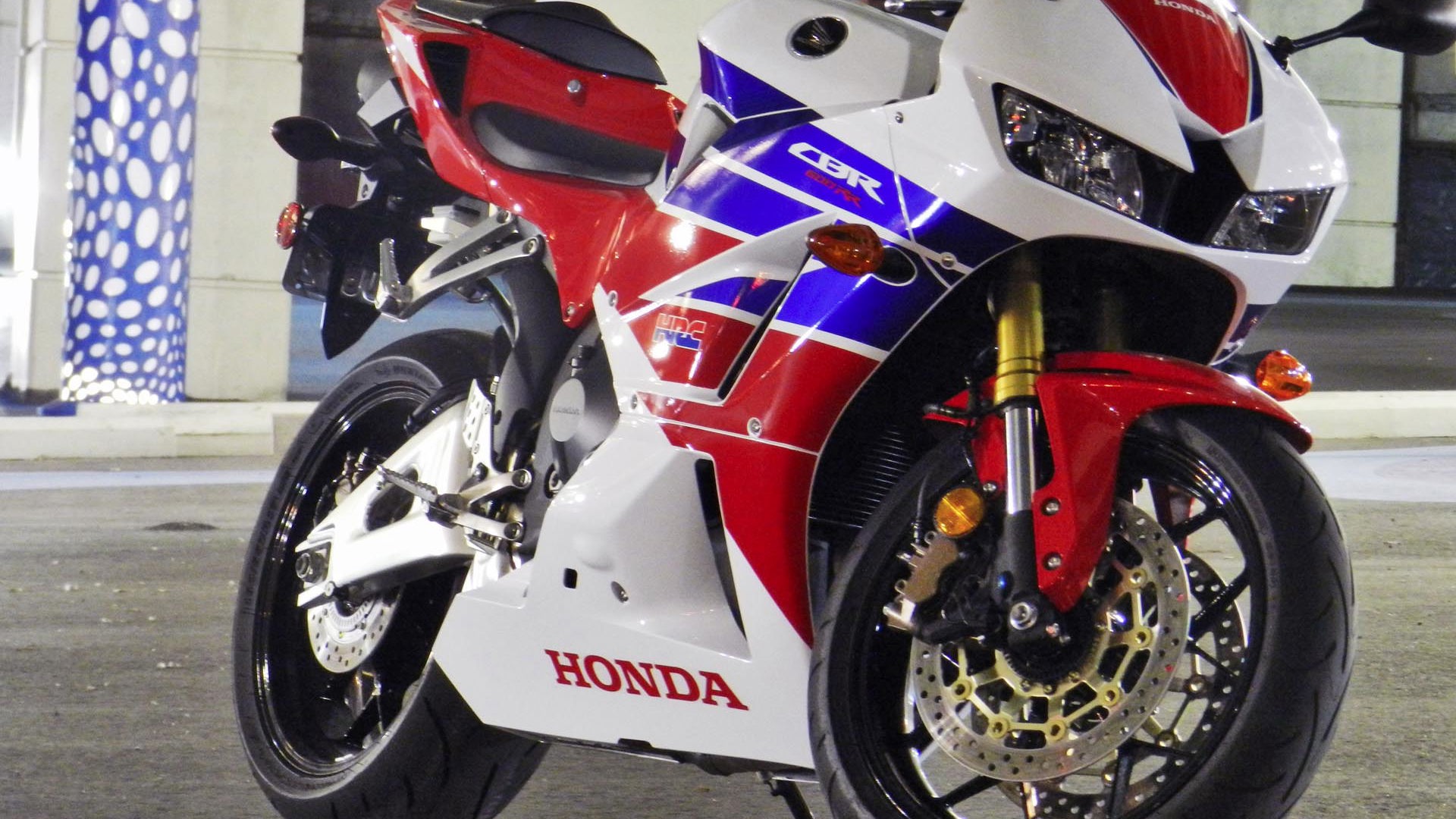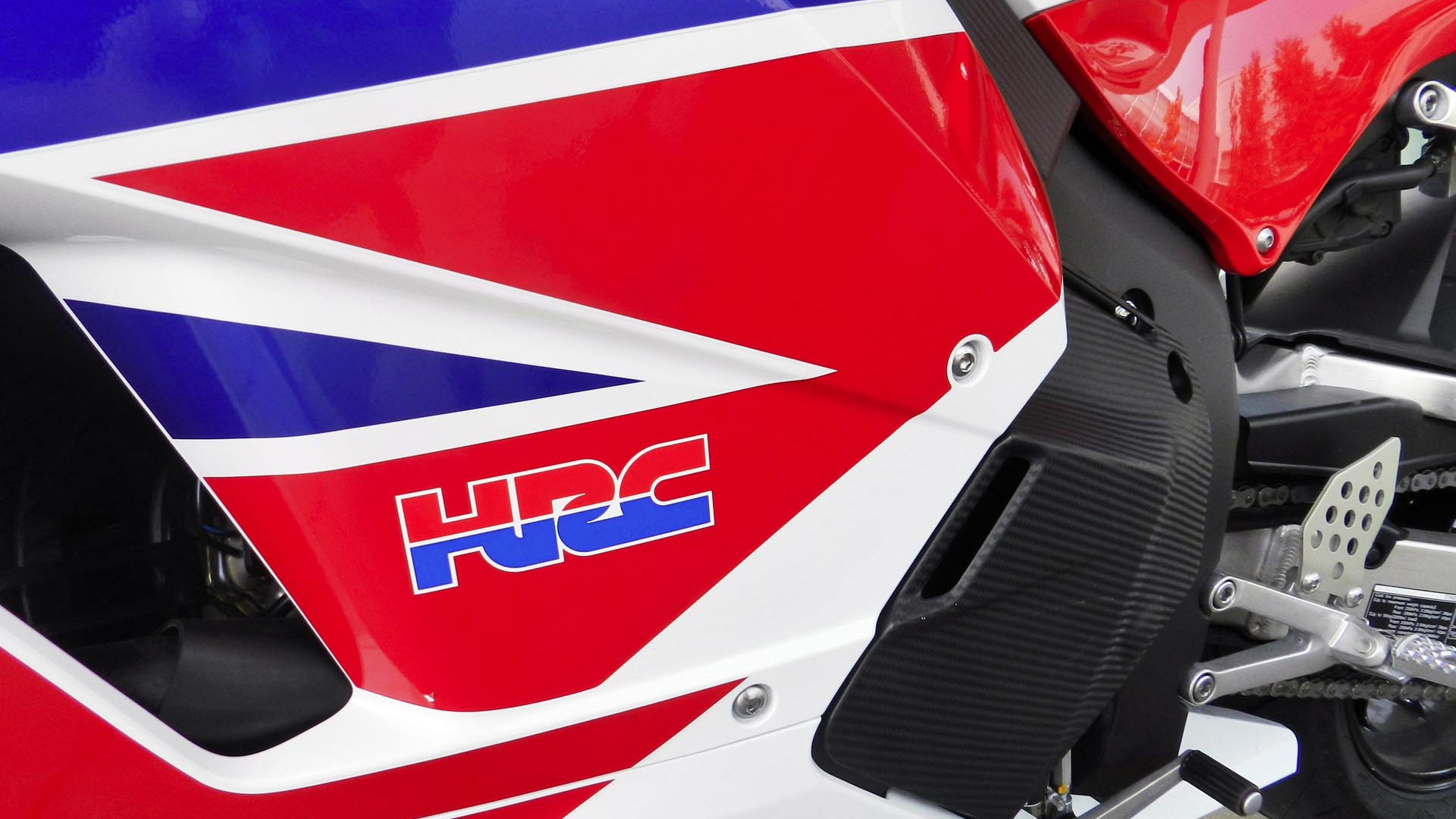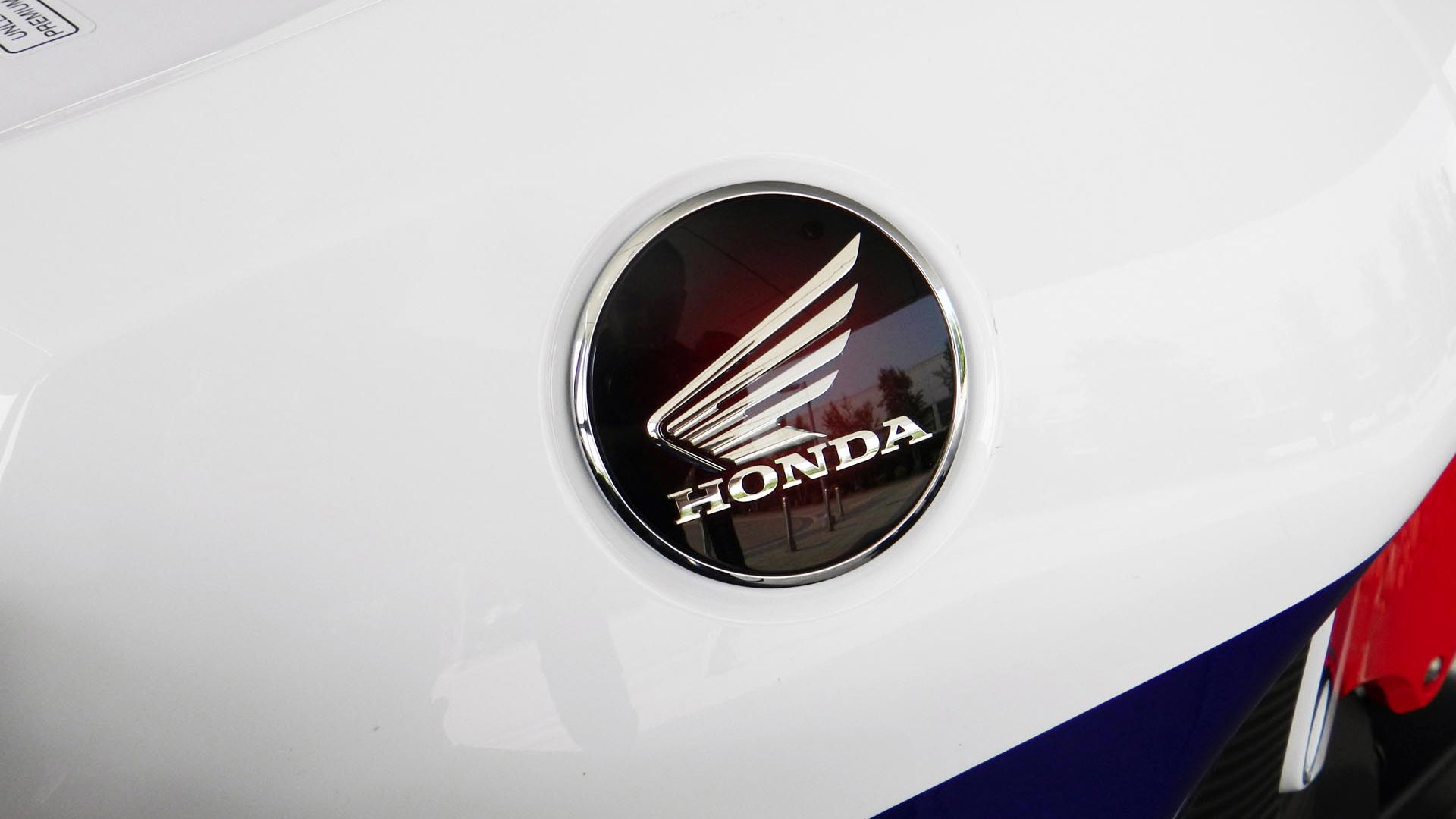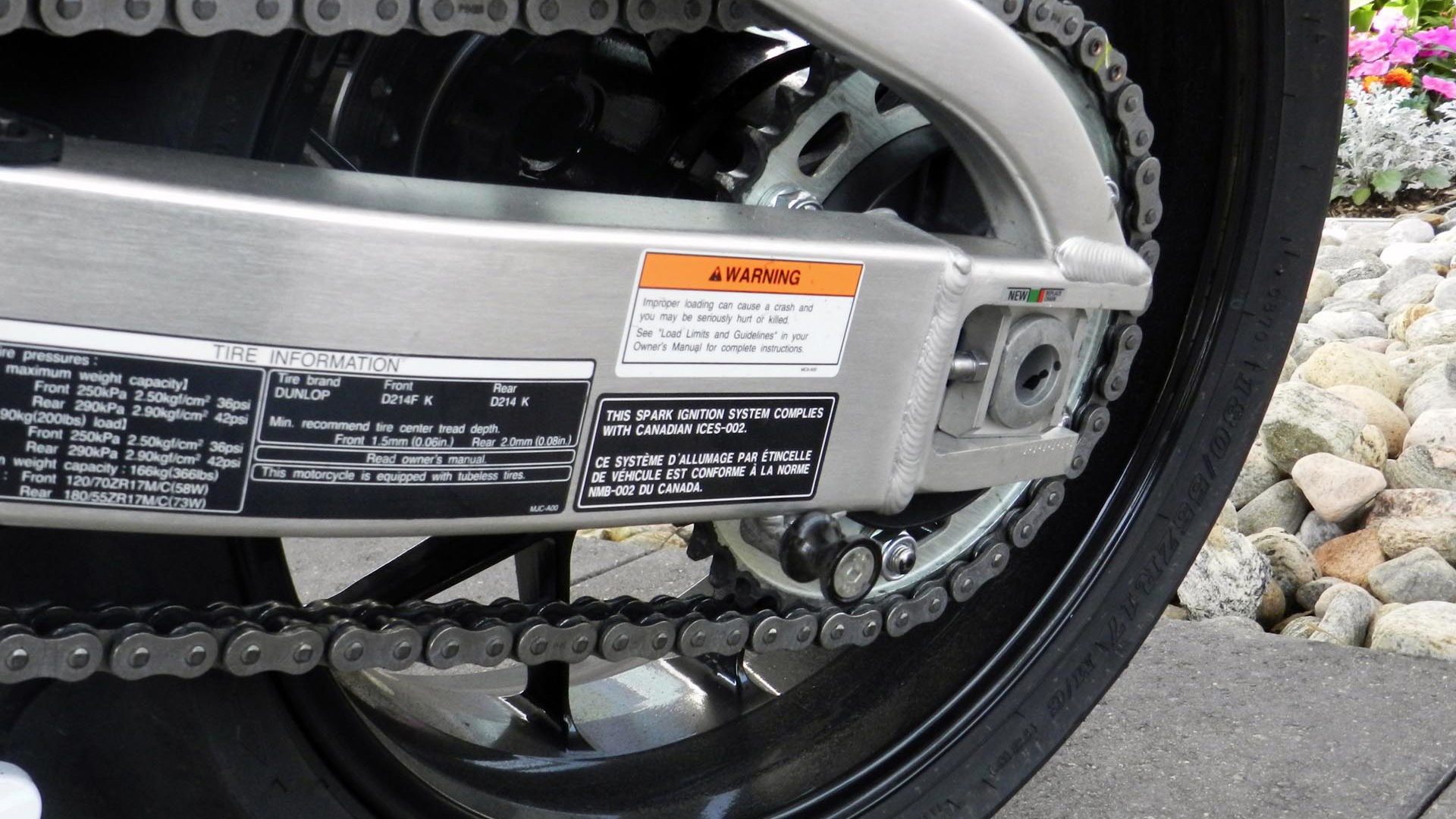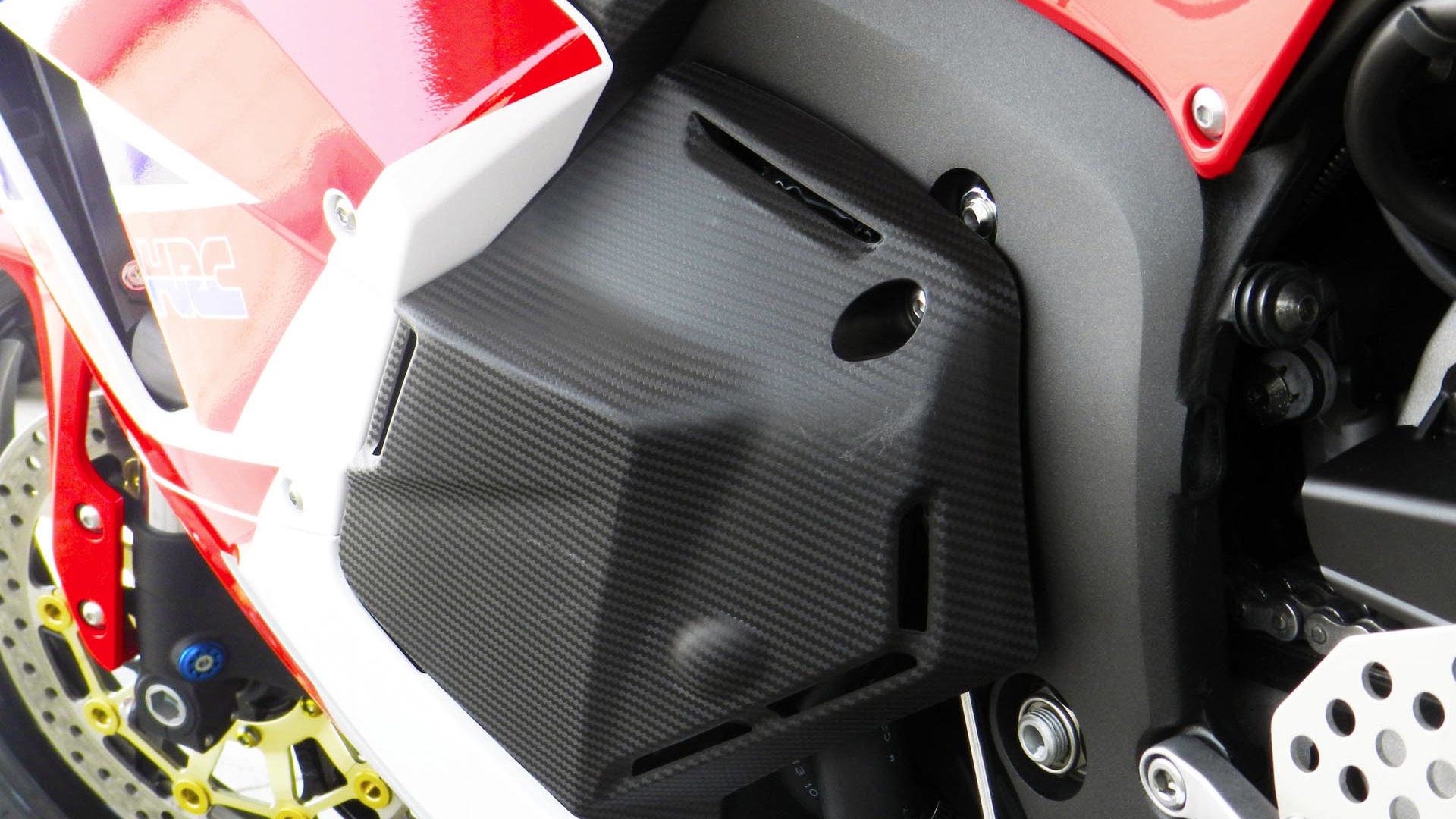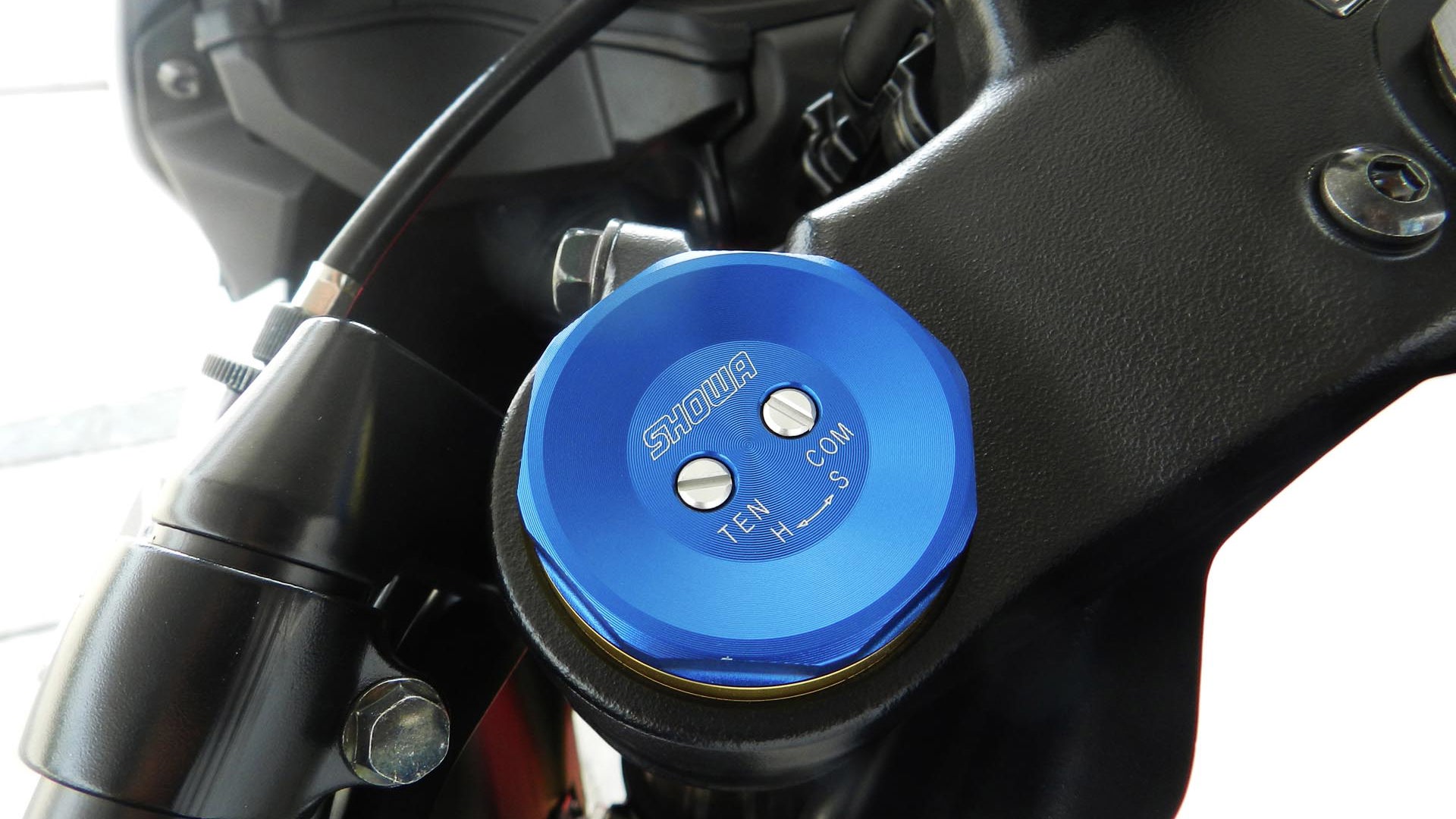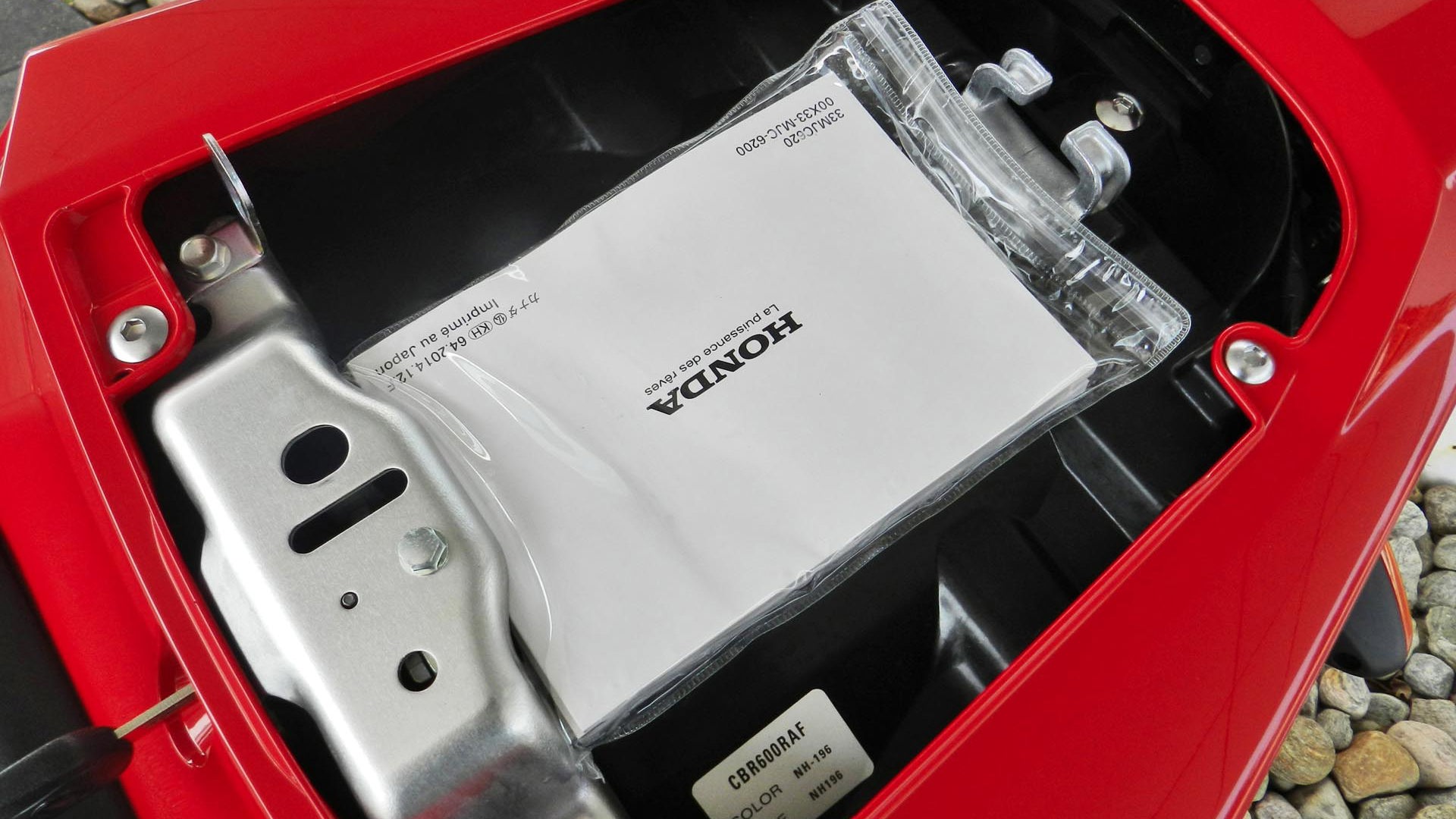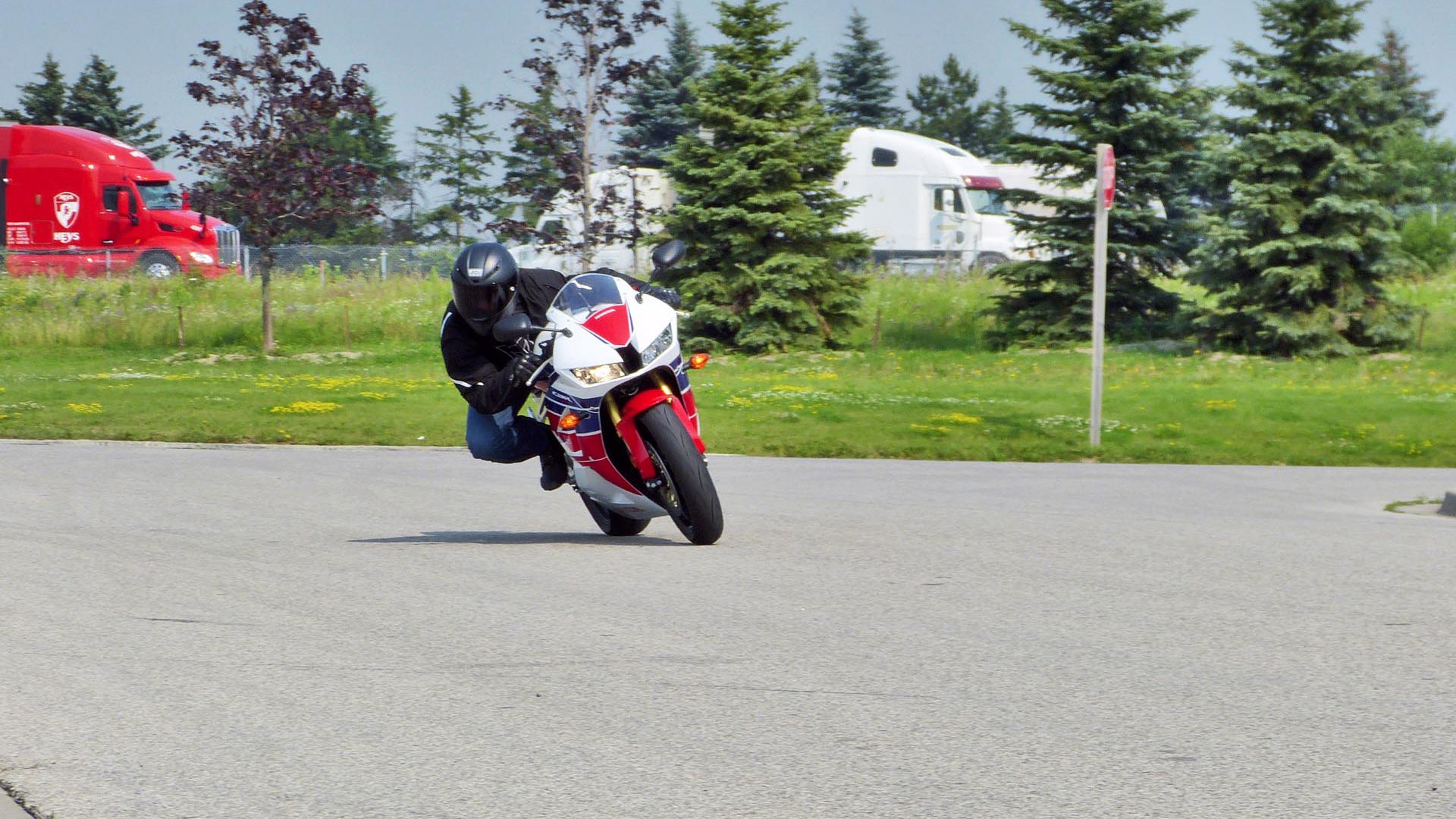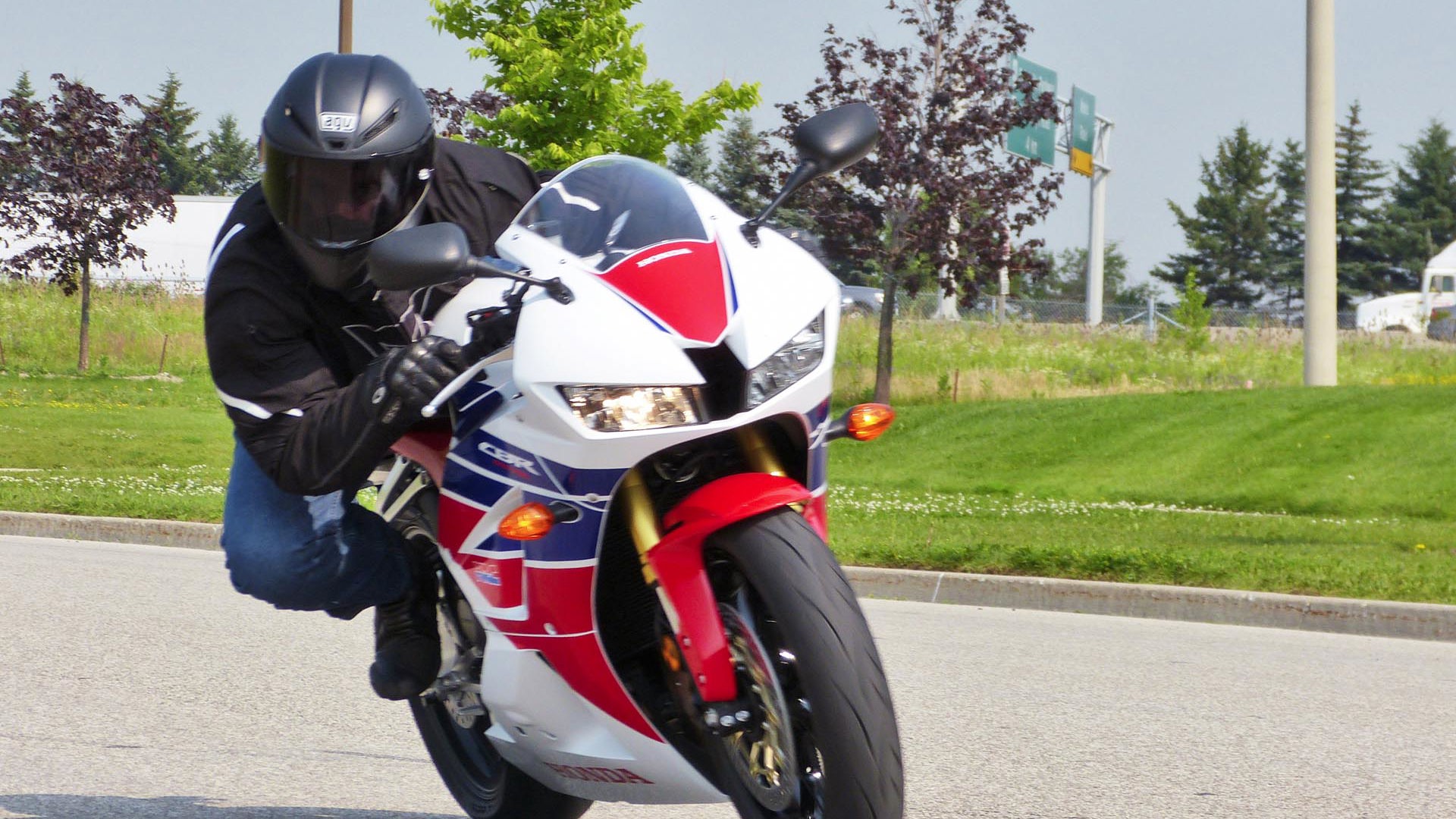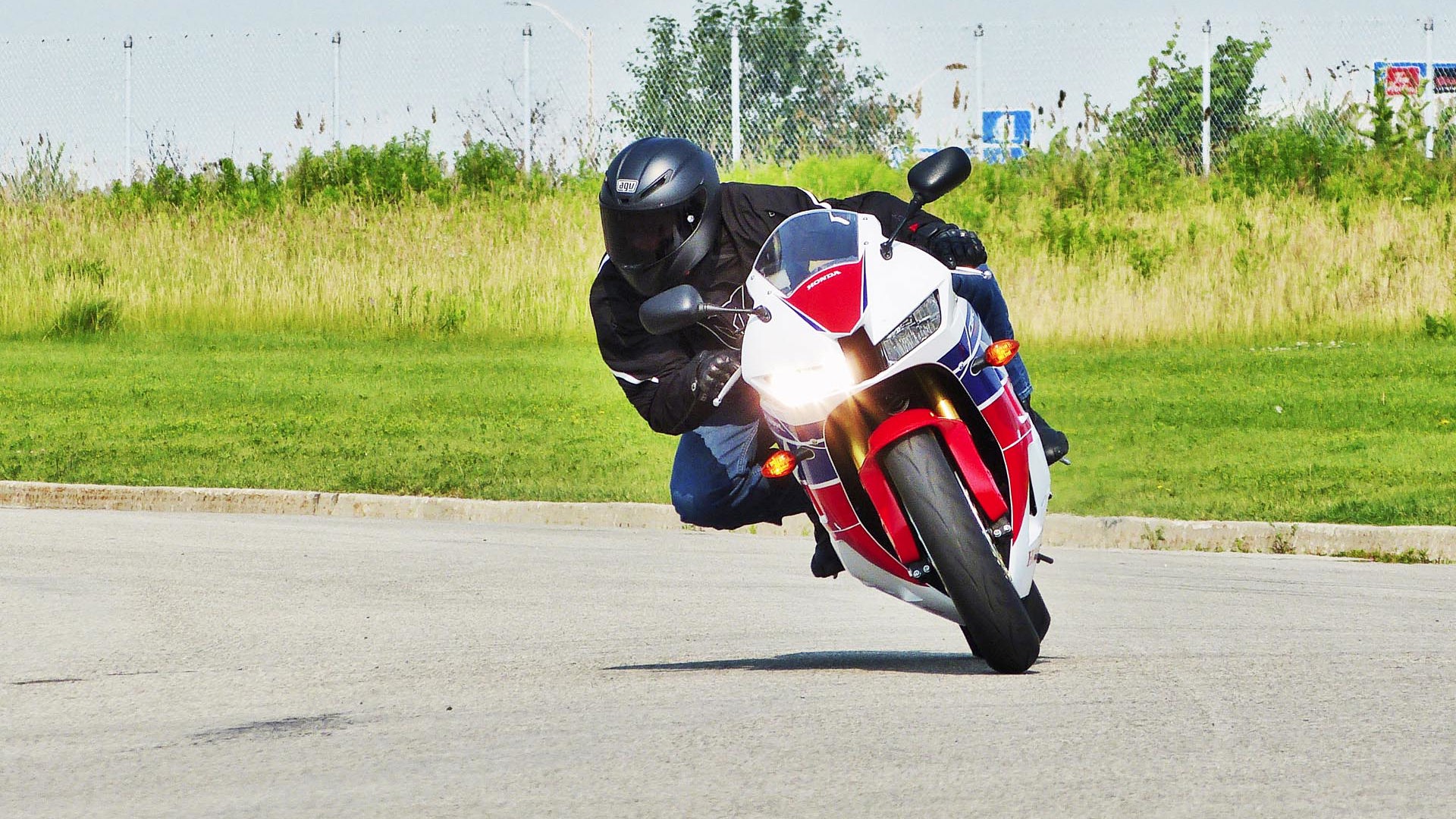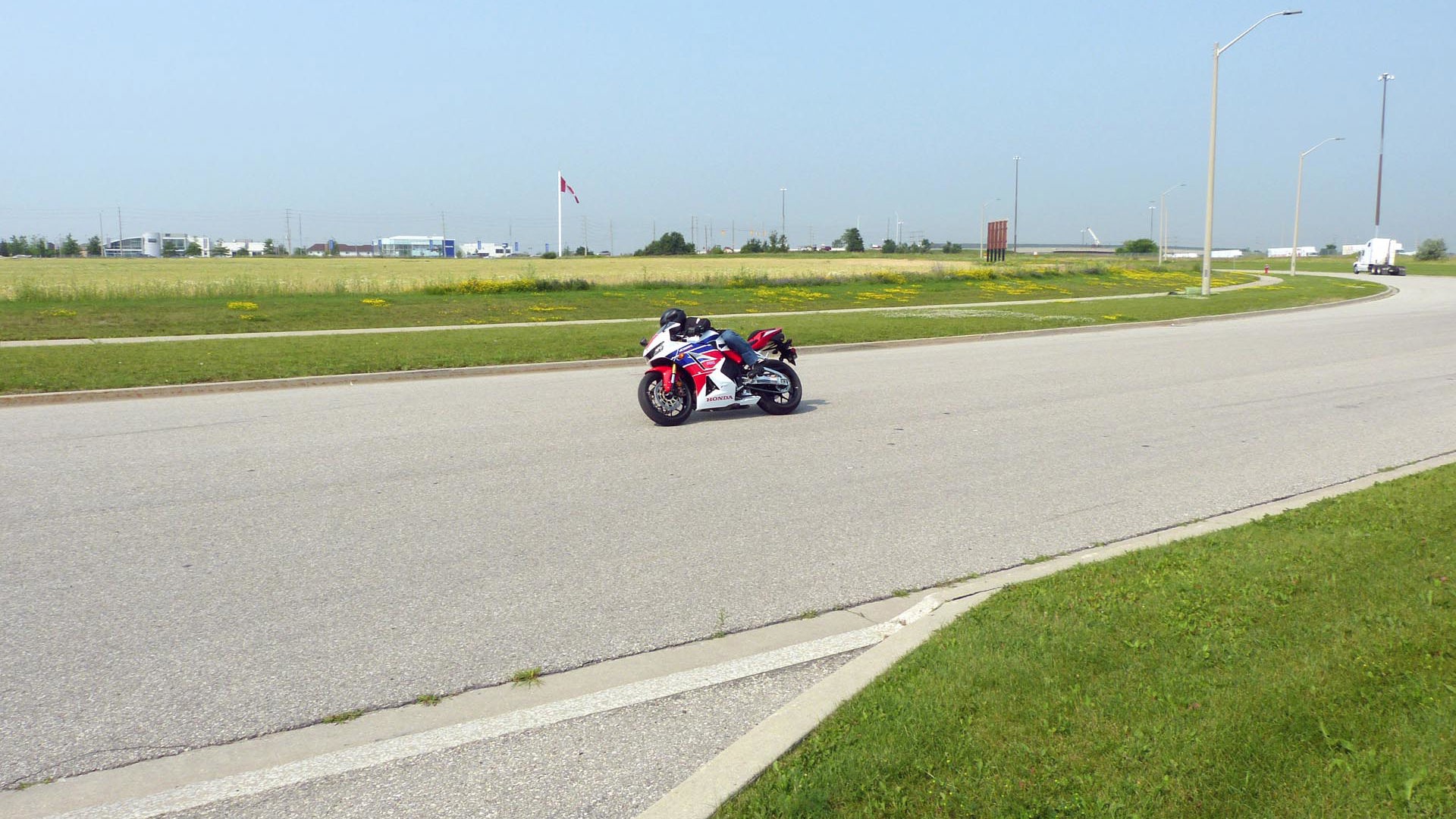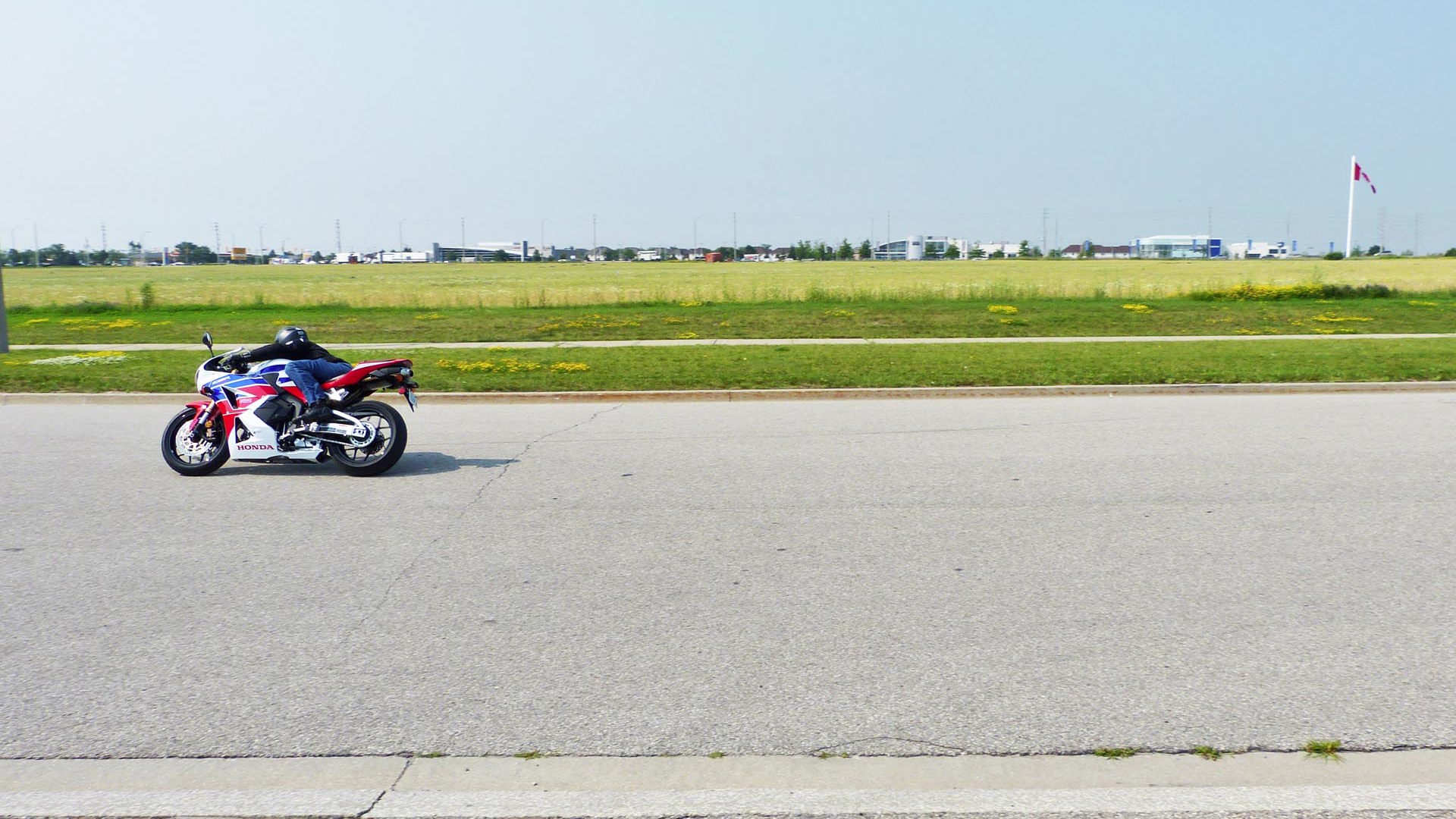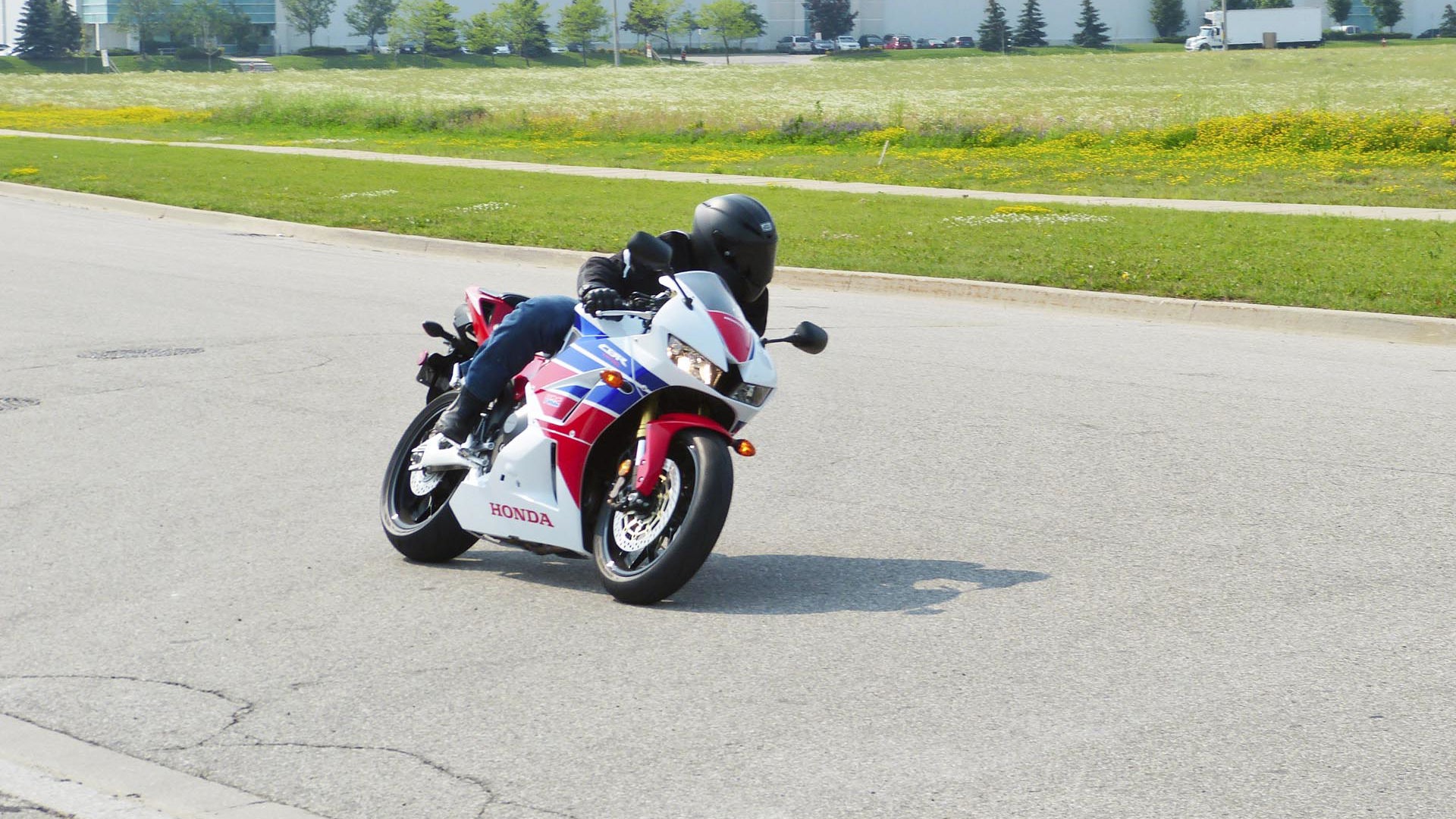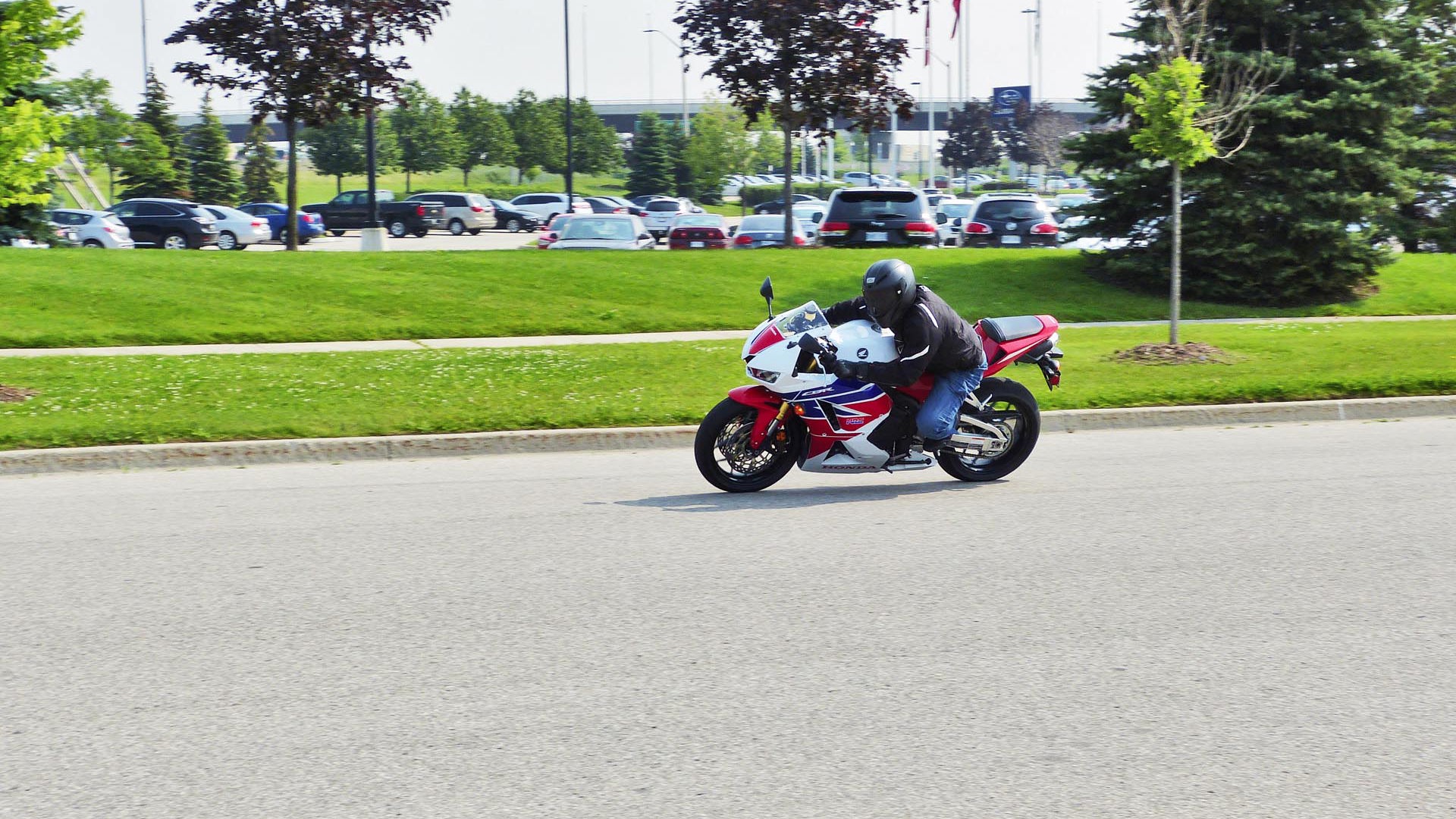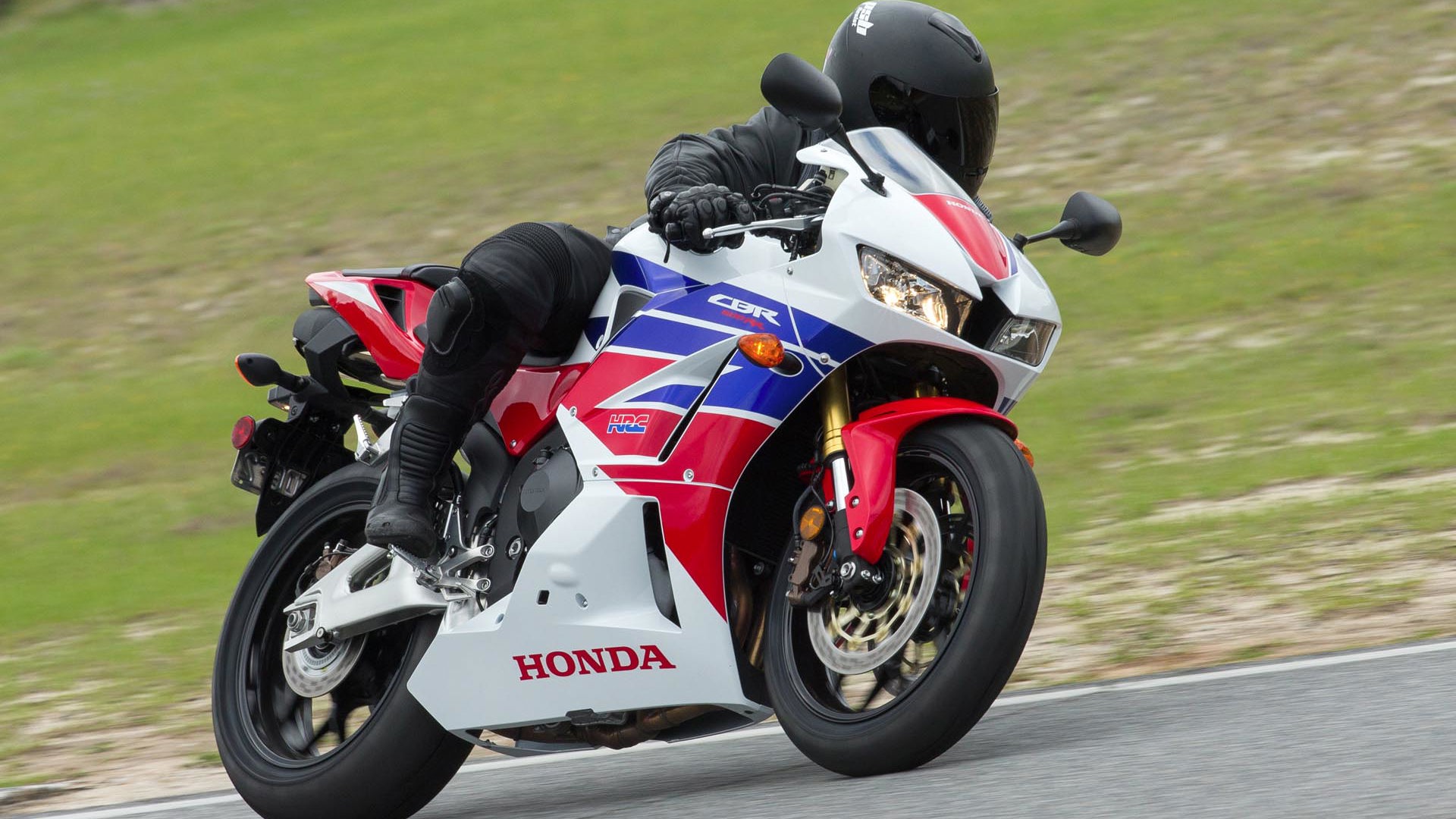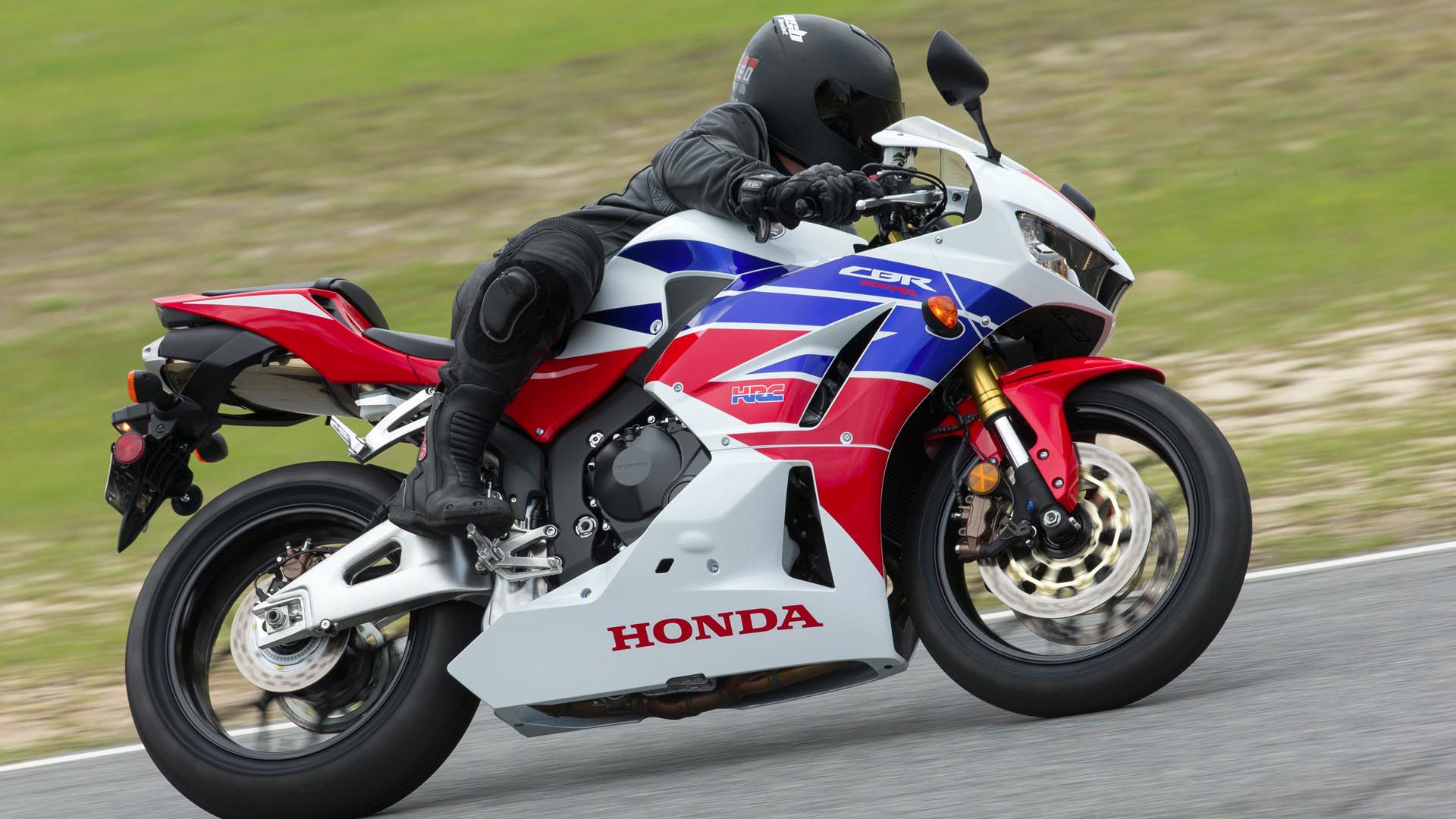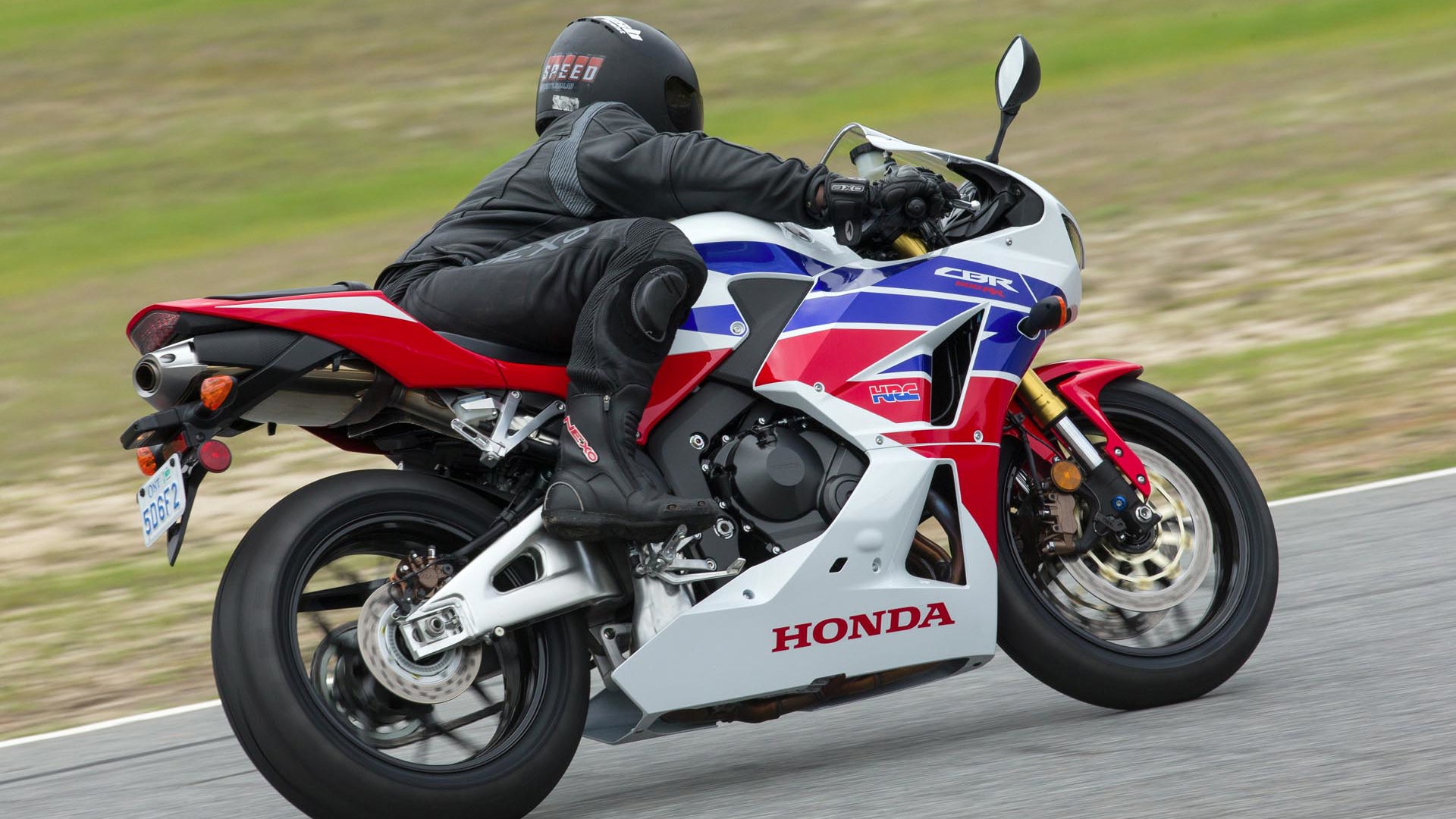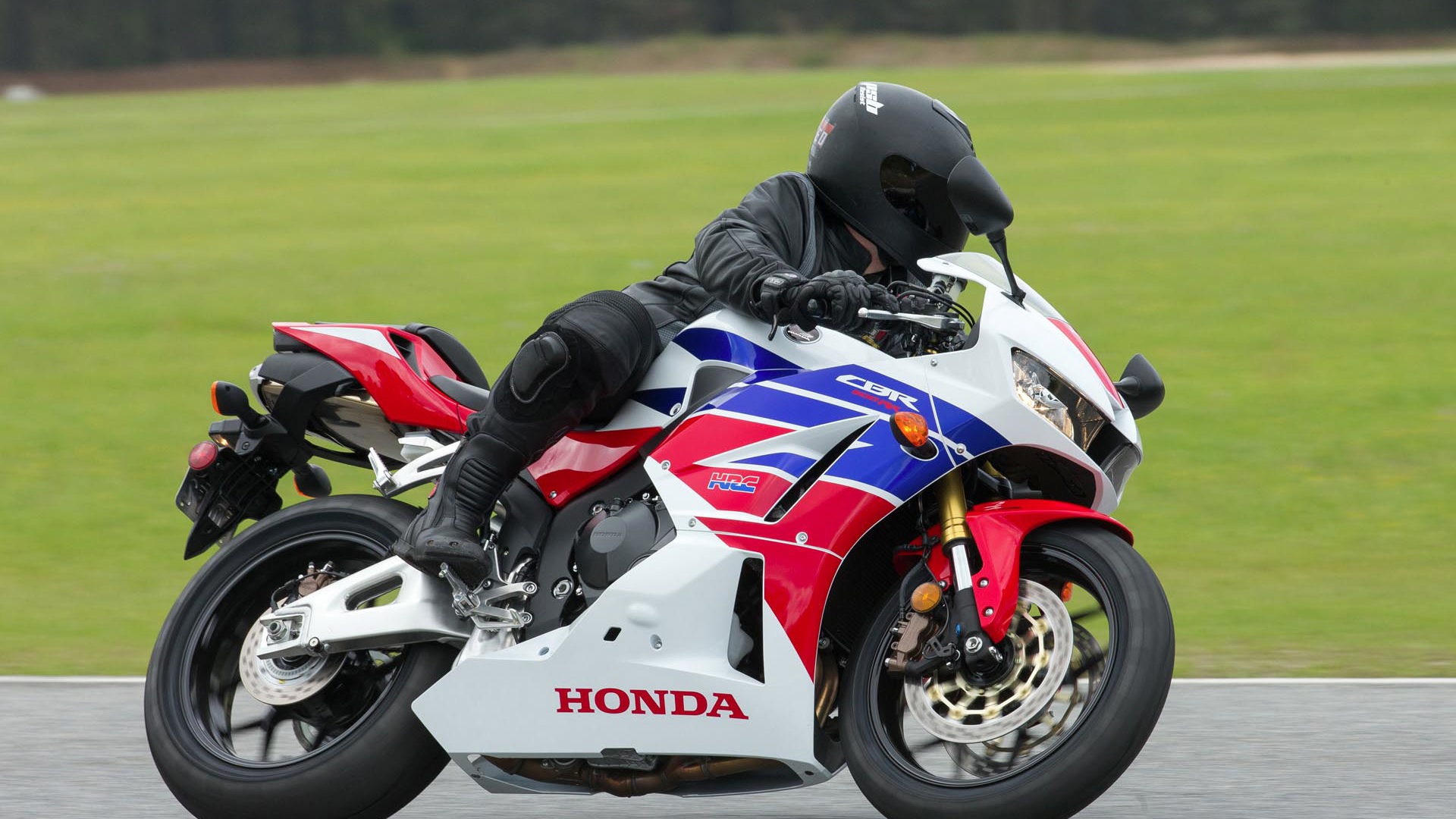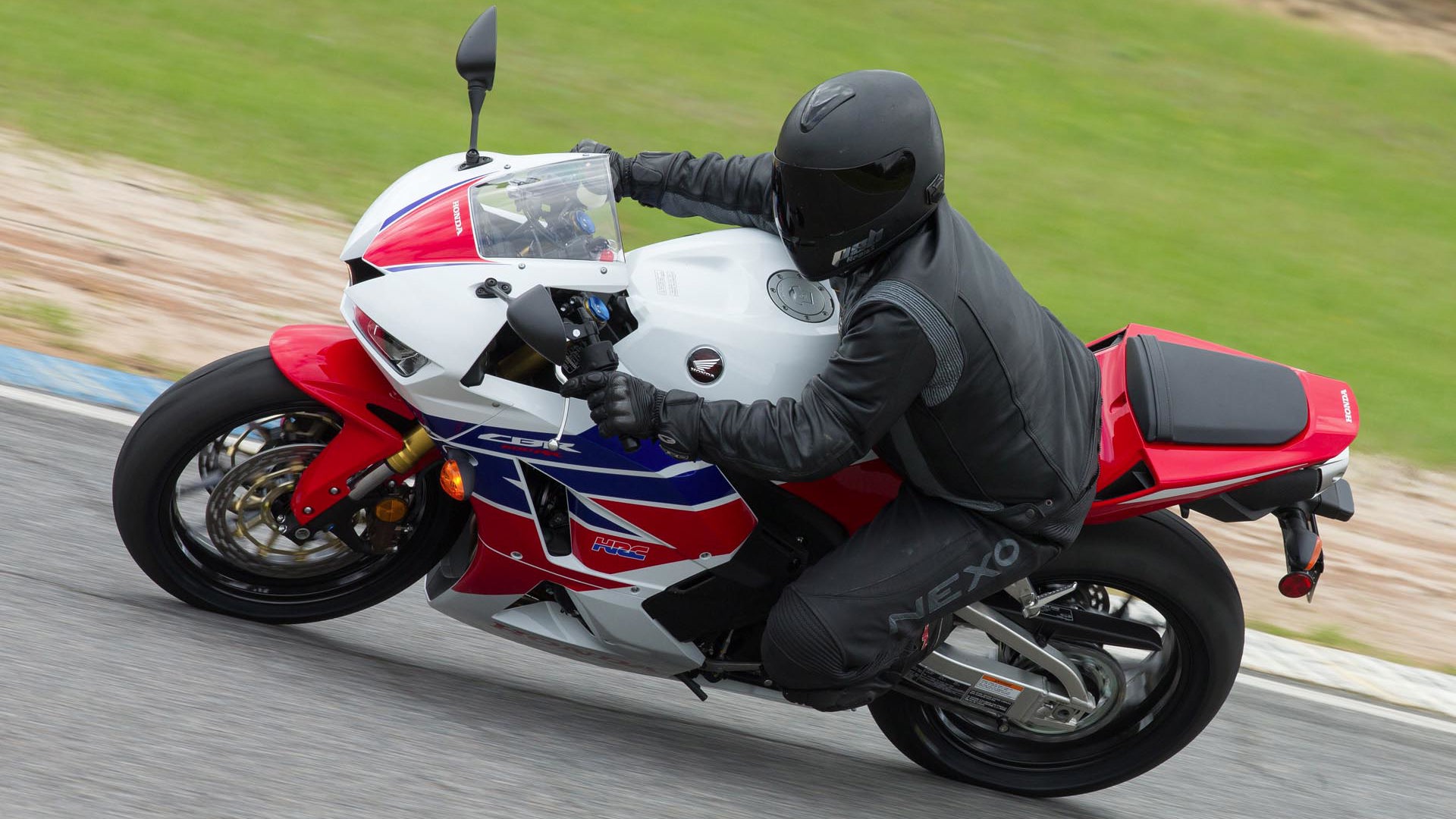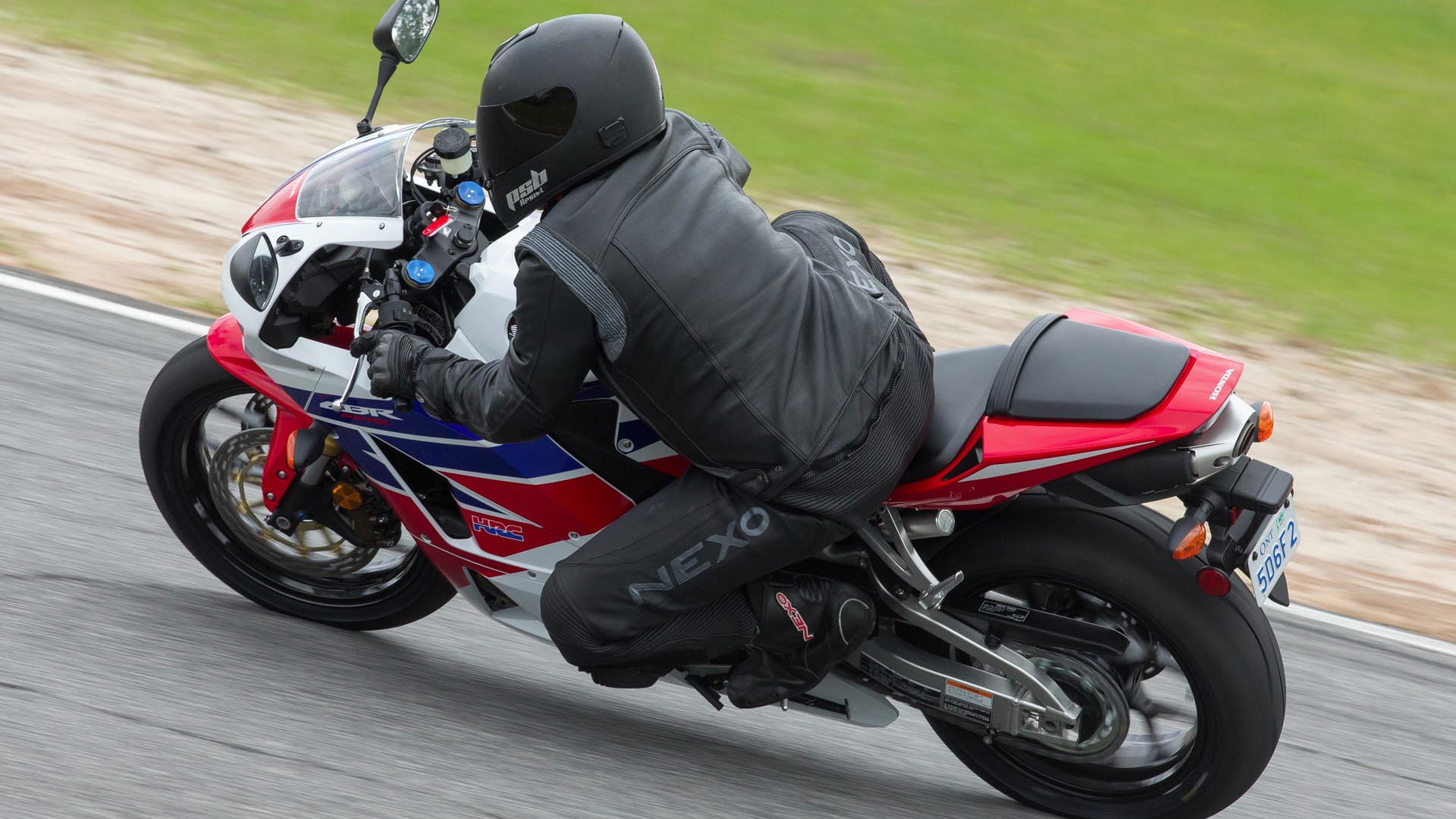Review by Jacob Black, photos by Jacob Black, RacingNorth.ca and courtesy of Honda Canada
There are many, many reasons why the 600cc supersport class is considered the “sweet spot” for so many road and track riders. The size makes them arguably the best-handling of the true sport bikes with more useable, accessible power than the litre bikes above them.
Not only that, but middleweight sport bikes often come in significantly cheaper than their more powerful siblings.
For example, the 185 kg 2015 Honda CBR600RR is 27 kg (10 percent) lighter than the 1000RR, and the wheelbase is 40 mm shorter at 1,370 mm – making it more nimble. It’s also $3,500 cheaper.
And yet, the 600RR is not necessarily the right bike for smaller riders because, curiously, the seat height is actually higher: 840 mm vs 818. This is something I found surprising when I first threw my leg over the tri-colour scalpel before me, and even more surprised when that high seat height still left me in an extremely compact riding position.
To say those pegs are set high is an understatement. Got ground clearance? You bet! Got a nice deep tuck? Absolutely. Grippy pegs? Good tank shape for wedging your outside knee into? Most definitely.
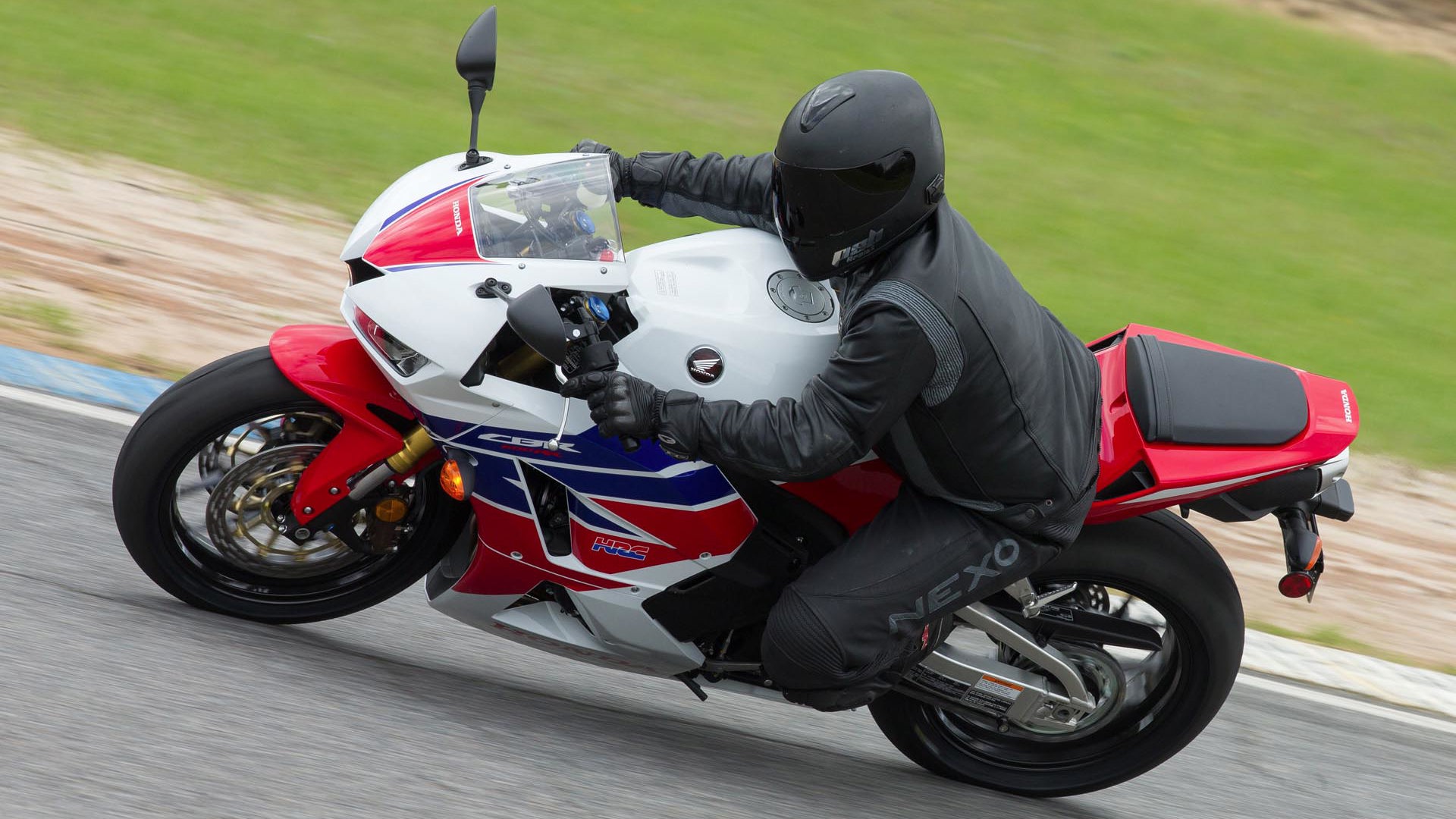
This one gets Honda’s linked ABS system, which boosts weight a little to 193 kg and which helps maximize stopping efficiency in most situations – especially in low-grip scenarios. The innovative combined system is a brake-by-wire system yet still gives decent feedback through the front lever. It also means newer riders with a tendency to overuse the rear brake won’t be sacrificing as much stopping power. Innovative or not, I recommend saving $1,000 and 8 kg by getting the $12,999 non-ABS model instead, even if the brake calipers aren’t the same sexy gold colour.
The combined system doesn’t feel natural enough. Besides, I only like ABS when it can be switched off, which this one couldn’t be. Why? Because sometimes I aim to misbehave.
Luckily the engine is a more willing partner in my debauchery.
I’ve ridden the CBR600RR briefly on a racetrack (though I spent more time that week getting the best out of the 2015 Honda CBR300R) and even there the 100-odd hp and 45 lb-ft of torque felt more than adequate. Those figures are only rough estimates however, as Honda and the rest of the Big Four seem to feel that we the people are not to be trusted with such information.
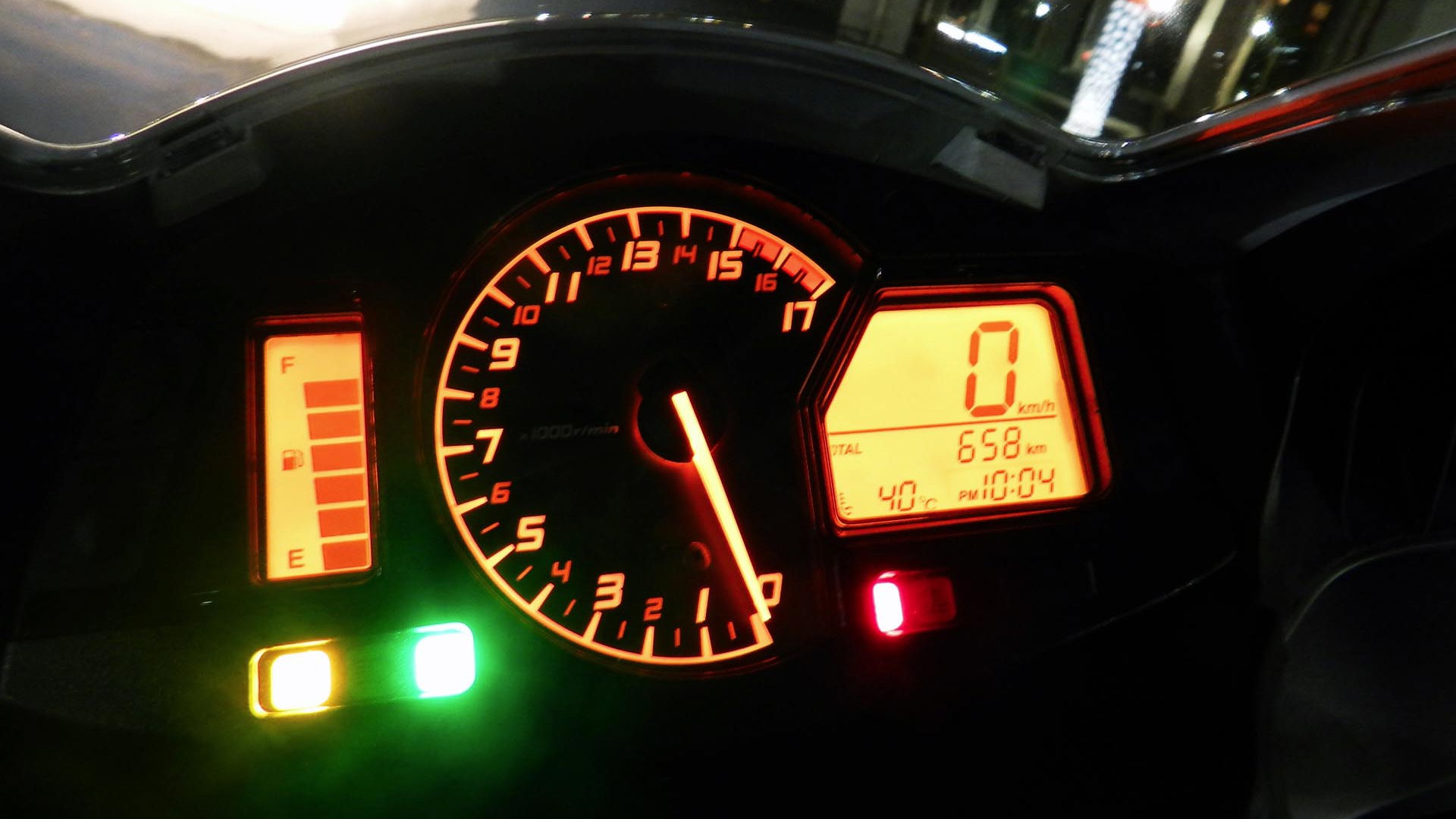
But peak power really doesn’t tell the story anyway. What you need to know is that the 600cc inline-four spools up toward its 15,000 rpm redline with an eager, efficient violence that would make Ronda Rousey proud. The high-pitched whine floods out from the under-seat exhaust in a one-bike mission to teach entire cities about the Doppler effect.
If you’re throttling up from low in the rev range, the power comes on with a smoothness that lulls you into a false sense of security. There’s a steady build that, if you’re smart, reminds you to get your weight forward before the needle climbs too high. But, because the bulk of the power isn’t really available ’til 7,500 rpm – about half through the rev range – you’ll go from “Oh, this is okay” to “Oh no, I’ve bitten off far too much to chew” lickety-split.
Easy fix: Keep the CBR in a lower gear and keep that engine spooled up over 7,500. That way you’ll always be in “angry mode” where this bike is happiest.
The six close-ratio gears are a joy to smash through with the toe of your left boot, but a deft hand is required to maximize the cleanliness of the power delivery – a fumbled shift seems magnified aboard the 600RR.
It’s an intriguing paradox. This engine is at once knife-edged in terms of engine performance and gearing, yet smooth and linear in terms of power delivery and acceleration. It makes it equal parts challenging and rewarding to ride.
This is one of the things that make smaller capacity bikes to enjoyable for so many people. They offer a unique challenge that takes time and concentration to get the best out of, without quite as much risk.
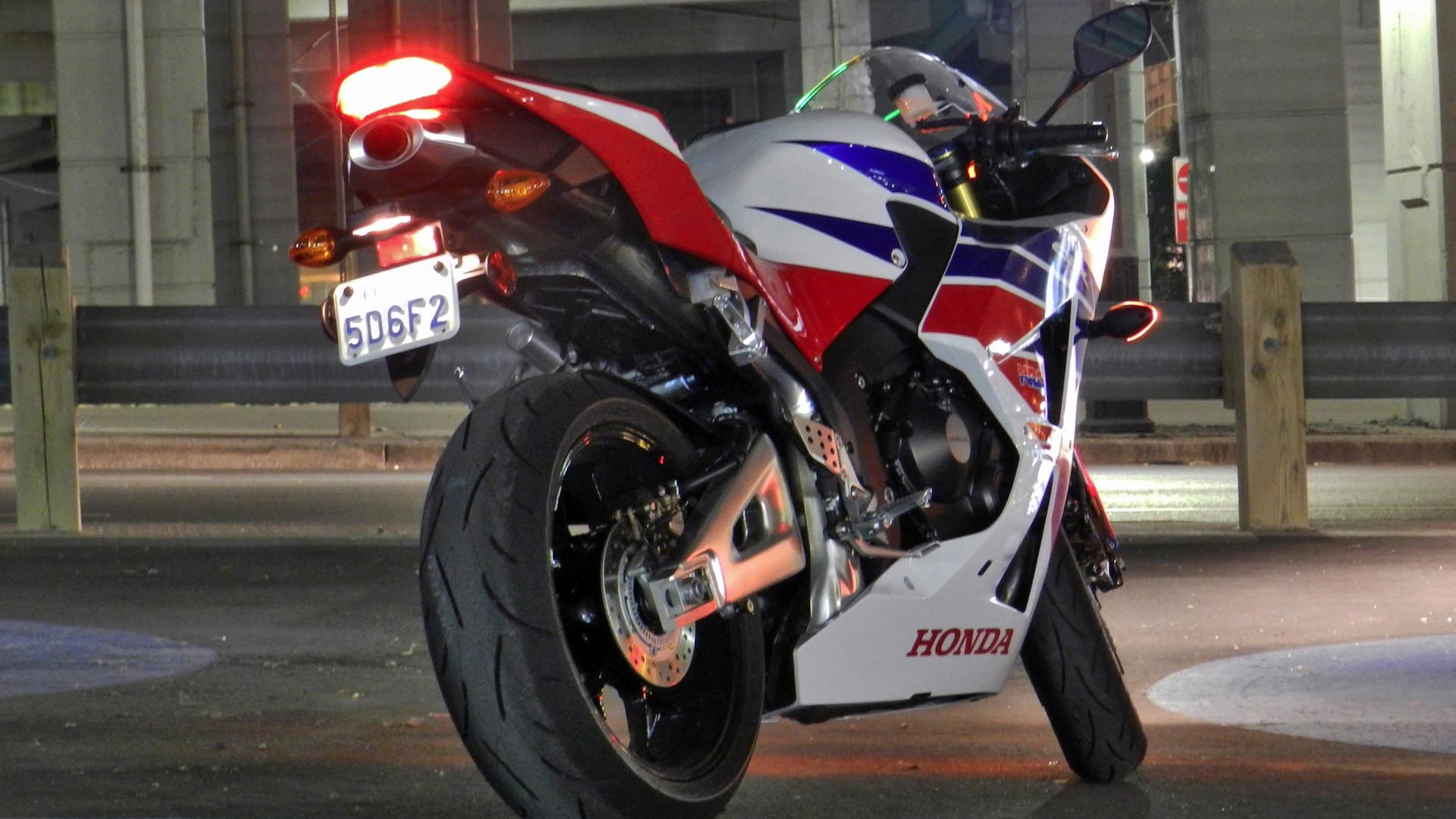
Every Honda I’ve ridden has been endowed with a compliant chassis that turns in sharply and responds eagerly to steering from all three major contact points – arms, bum, and feet – and it wasn’t any different here except for one little quirk.
This particular bike seemed to get upset by large depressions – bumps were no problems but a step-down or a dip in the road caused the 41 mm upside forks to become hyper-sensitive, and it took a long time to recover from. Because I didn’t experience it on the bike I rode on track earlier in the year I tend to blame this on a previous journalist mucking about with the settings more than an inherent flaw in the suspension.
More time with the bike might have allowed me to dial it in but if I’m honest I try not to mess about with the rebound, preload and compression adjustments (available at both ends here) without the help of a better-educated professional to help me. If you do buy a sport bike, any sport bike, I recommend spending some time and energy with such a person to help set your bike up right for you. The difference between stock and bespoke setups is transformative. Having said that, the difference between stock and “Oh, I’ll try this” could be transformative for your face so please do consult someone who knows their stuff.
If you do, you will find the Honda CBR600RR shrinks around your body and becomes a natural extension of you. The just-right sizing gives it a confidence-inspiring agility that makes short work of any regular corner, and provides enough capability for you to thoroughly explore your limits and beyond on a track day.
You’ll look like a star doing it too. Of all the Japanese 600s the CBR is the one that most appeals to me aesthetically. Especially in the traditional Honda tri-colour palette. The splash of carbon fibre around the engine and the indented Honda badge on the airbox cover only accentuate the sharp lines and well-balanced styling.
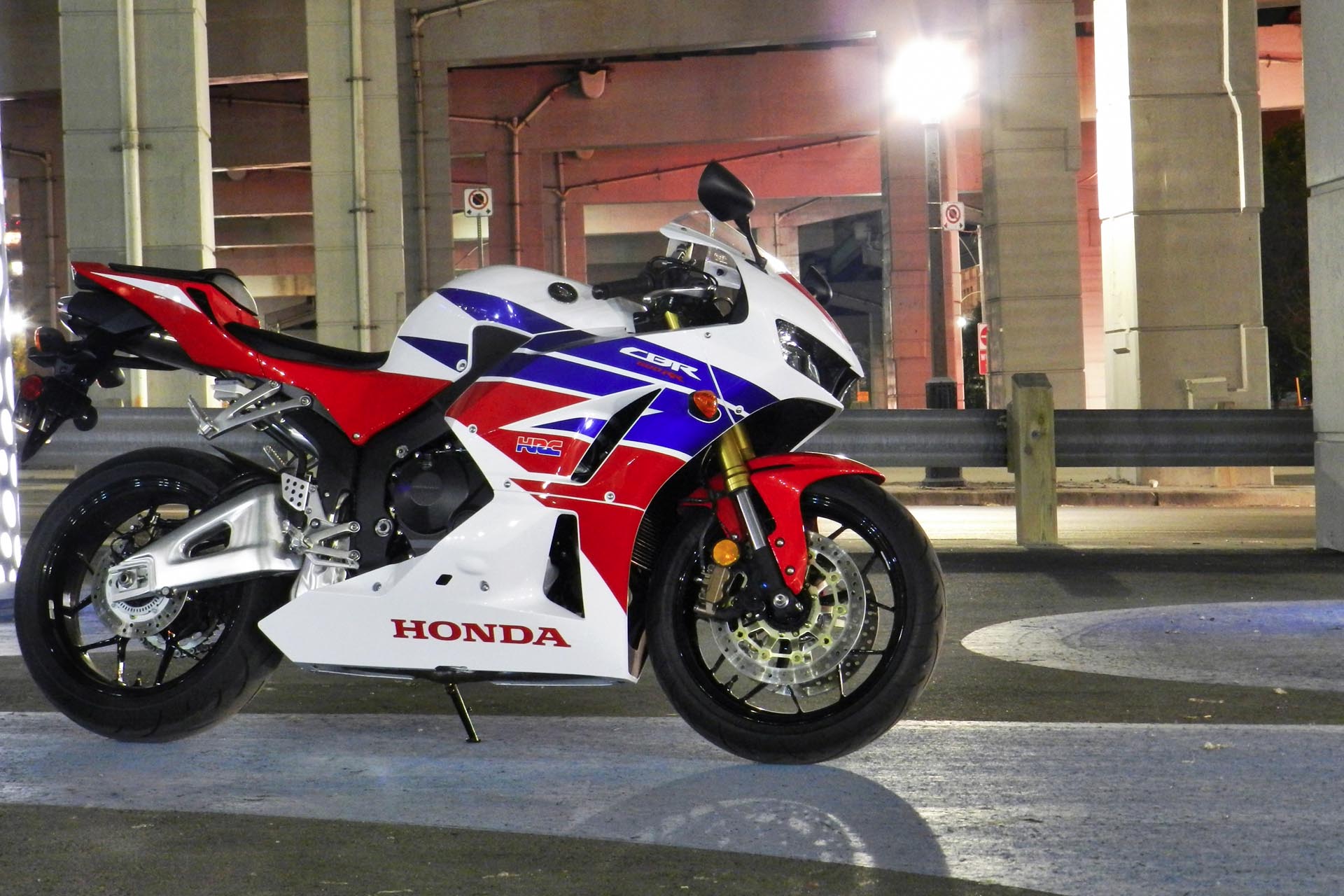
You have to expect that a bike with this pedigree and reputation would bring curb appeal to match. The CBR600RR is more than a contender. It’s one of the stars of the sport, a headline act that draws even mainstream fans to its ringside seats.
In the world of middleweights, this is a heavy hitter.
Key Specs
Engine: 600cc, inline four
Horsepower: 100 hp (unofficial)
Torque: 44 lb-ft (unofficial)
Curb weight (wet): 193 kg (ABS), 185 kg (non-ABS)
Seat height: 840 mm
Wheelbase: 1,37 mm
Tires front/rear: 120/70 ZR 17, 180/55 ZR17
Fuel Capacity: 18L
Suspension: Front – 41 mm inverted Big Piston fork with full adjustability; 109 mm (4.3") travel
Rear – Unit Pro-Link HMAS single shock with full adjustability; 130 mm (5.1 in.) travel
